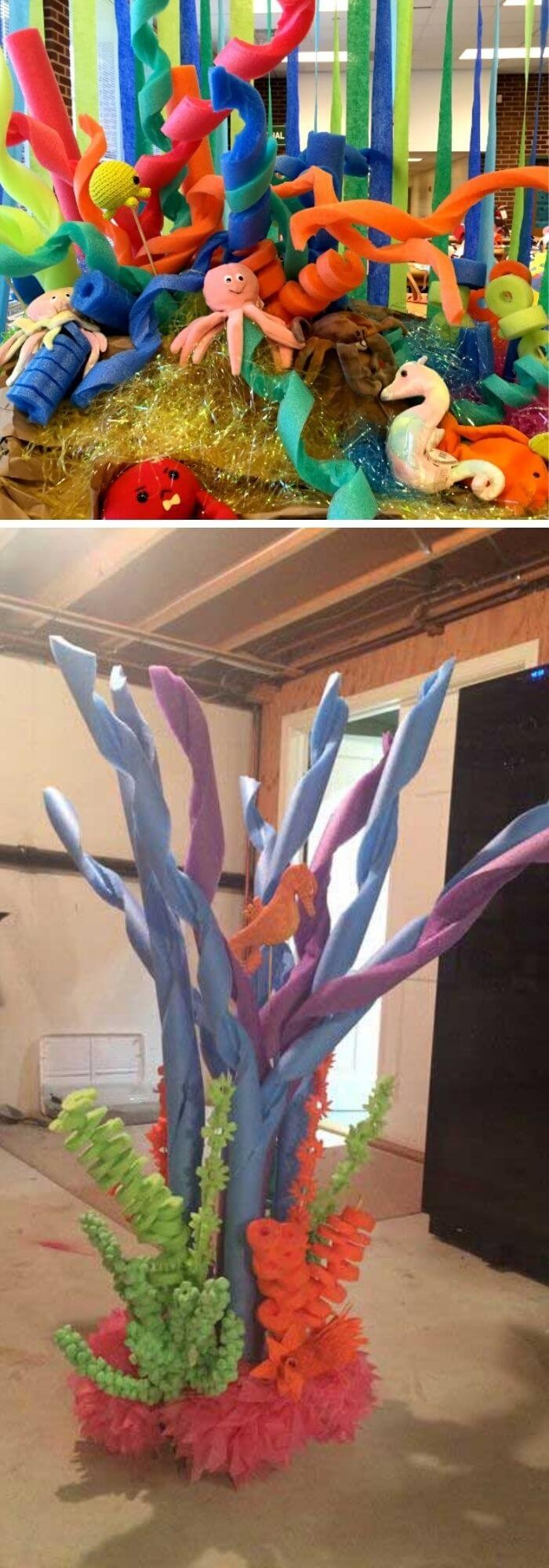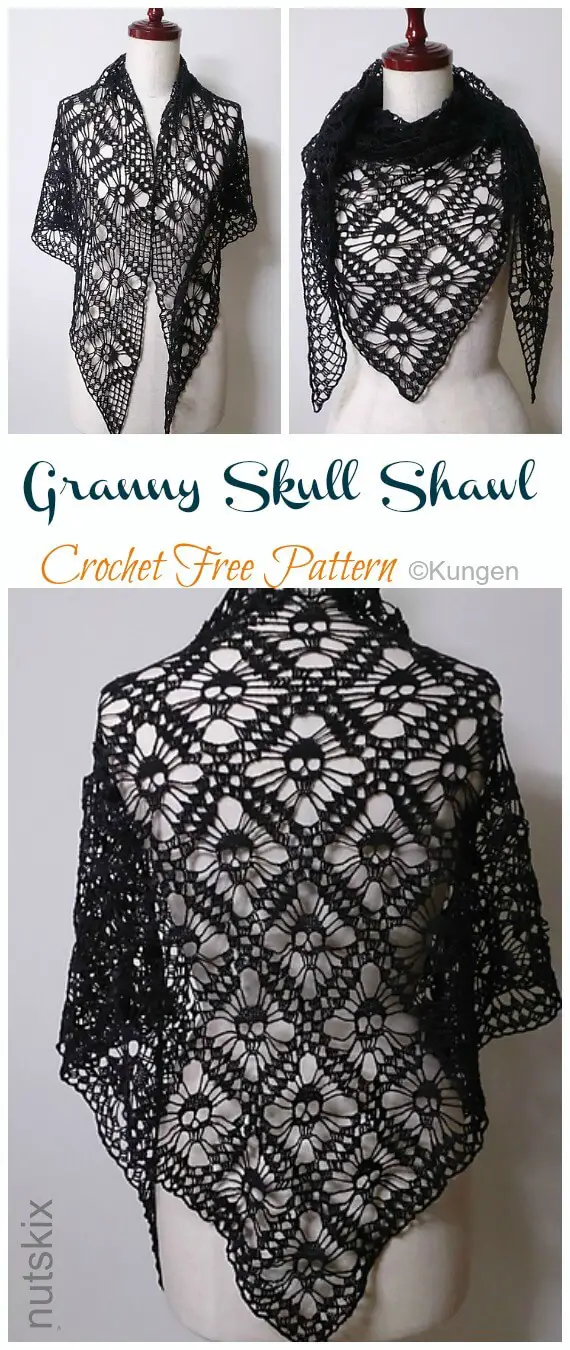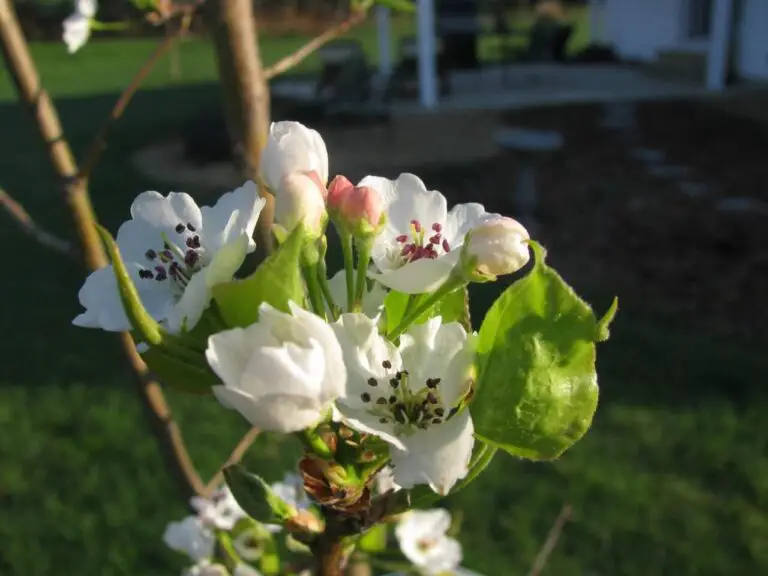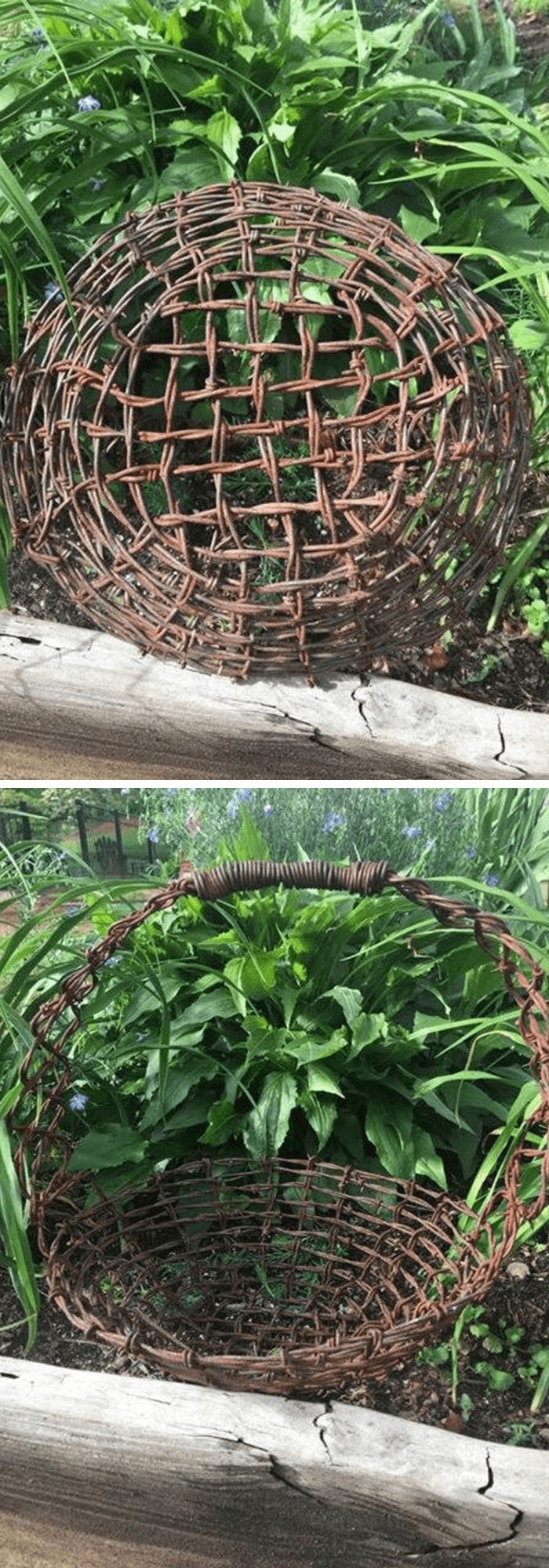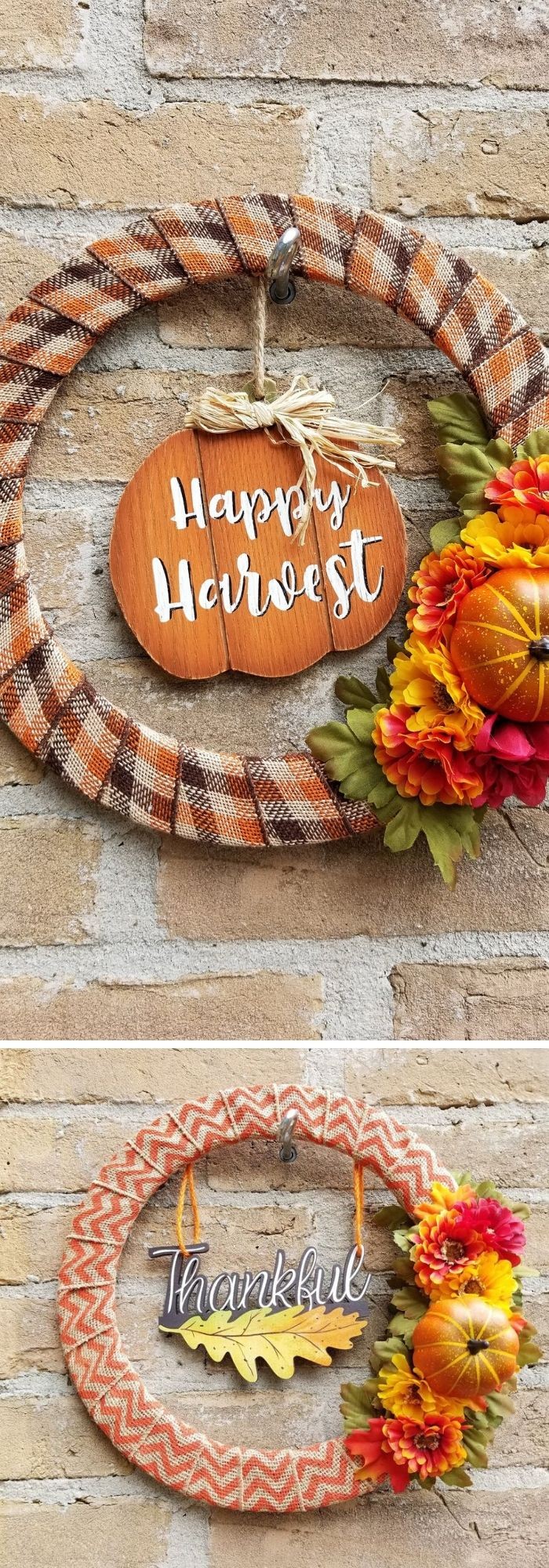34 Best Colors That Go Well With Beige In Home Decor
Beige, a versatile and calming neutral tone, offers a wide range of possibilities when it comes to pairing colors. With its soft, warm undertones, it can be paired with various shades to create harmonious and visually appealing combinations. From bold and bright hues to subtle and muted tones, beige can accommodate them all. Whether you’re looking for a striking contrast or a soothing match, we’ll explore the best color combinations that complement this popular neutral shade.
What color is beige?
While the notion of beige may seem straightforward, its actual meaning is open to interpretation. The color beige can morph into various hues depending on the context in which it’s used. For instance, it might evoke a pale yellowish-brown tone, a light gray shade, or even subtle undertones of green or blue. Ultimately, the specific connotation of beige hinges on individual perspective and surrounding circumstances.
Some may view beige as a dull color, but its versatility lies in the diverse range of shades available. This subjectivity can be seen as a matter of personal taste. Furthermore, beige’s warm and inviting quality makes it a popular choice for home décor, allowing individuals to create a cozy atmosphere that reflects their unique aesthetic.
Beige color meaning
Beige, often regarded as a neutral hue, can evoke mixed emotions. On one hand, it may be perceived as dull or uninspiring, yet on the other, it can exude a calming and serene quality. This versatility has led to beige being used in interior design to foster a sense of tranquility and relaxation. In the fashion realm, beige is viewed as a reliable and adaptable color that suits all individuals.
Some may find that beige drains their complexion, while others appreciate its flattering and enduring nature. For those uncertain about beige’s suitability, testing it through different outfits can provide valuable insight. Moreover, beige pairs well with numerous colors, making it an excellent choice for those seeking a versatile wardrobe.
The meaning of beige color in Feng Shui.
While beige is often linked with neutrality, its tranquil essence makes it an ideal choice for fostering peace and serenity in various settings. In the realm of Feng Shui, this calming hue is believed to soothe the senses, promoting a sense of relaxation and tranquility. To harness beige’s relaxing properties, consider incorporating it into spaces where calmness is paramount, such as bedrooms or bathrooms. This can be achieved through the strategic use of beige paint, wallpaper, or furniture.
Moreover, beige’s calming influence can also benefit office environments, helping to create a productive and focused atmosphere when used thoughtfully.
What is the best color combination for beige?
While there’s no one-size-fits-all solution when it comes to pairing colors with beige, the possibilities are endless. The key is to find a combination that resonates with your personal style and aesthetic goals. If you’re looking for a timeless and classic look, black and white is always a safe bet. Alternatively, you could opt for a warm and earthy feel by pairing beige with brown and cream tones. For a touch of sophistication and glamour, consider combining it with green and gold hues.
Ultimately, the best color combination for beige is one that reflects your unique taste and vision – so don’t be afraid to experiment and find what works best for you.
Almond and Beige.
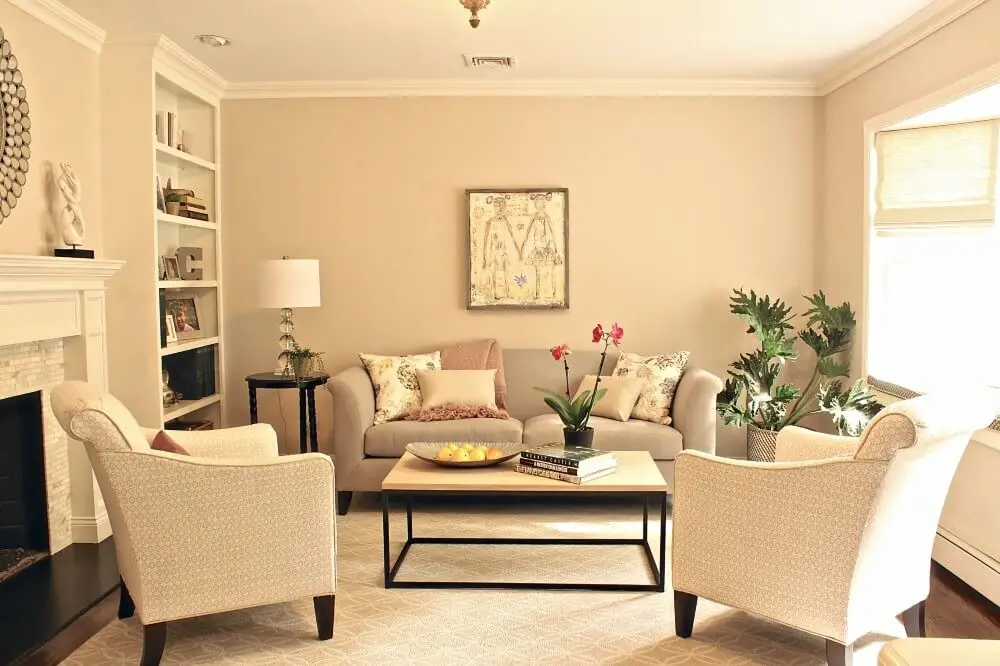
Neutral shades, including beige, cream, and taupe, offer a versatile palette for any room in your home. They’re particularly well-suited for bedrooms and living rooms, where their calming and serene ambiance can promote relaxation and tranquility. What’s more, these colors are highly adaptable and can be successfully paired with other neutrals like black, white, and gray to create a harmonious and balanced look.
Alternatively, you can combine them with bolder hues like red or green to add a pop of color and visual interest.
Black and Beige.
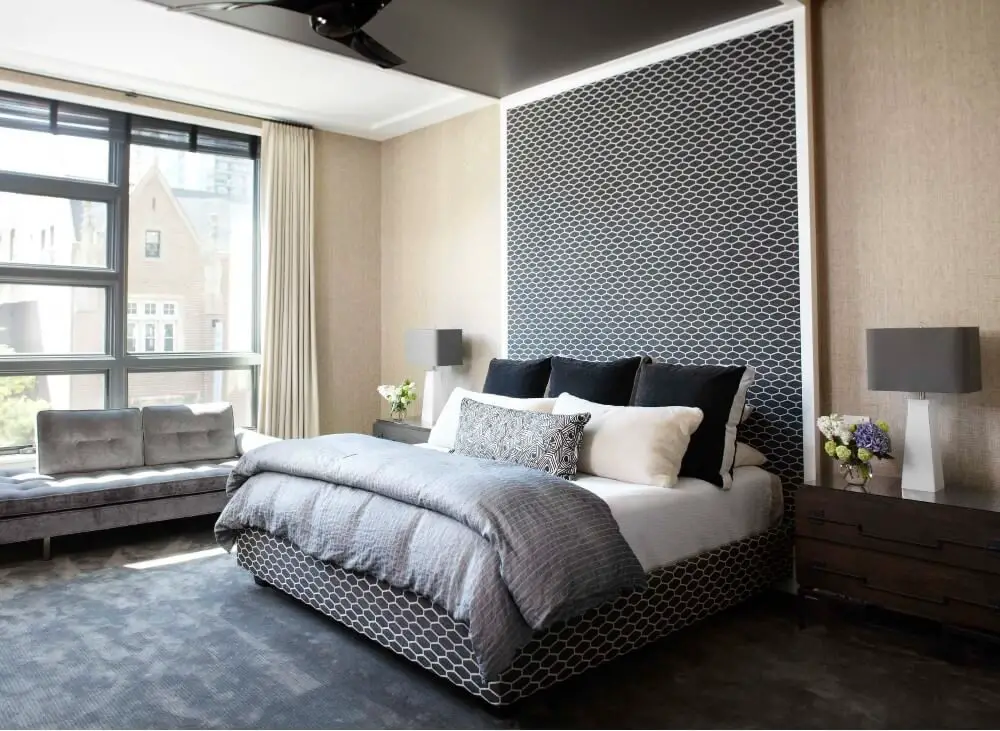
When it comes to home decor, two colors that can be leveraged to great effect are black and beige. These hues can be combined in various ways to produce a distinctive aesthetic that reflects the unique character of your home. One approach is to use them in tandem to create contrast with a predominantly single-colored room. Alternatively, you may prefer a more understated look by pairing beige and black together.
This subtle combination can imbue your space with an air of sophistication and refinement.
Blue and Beige.
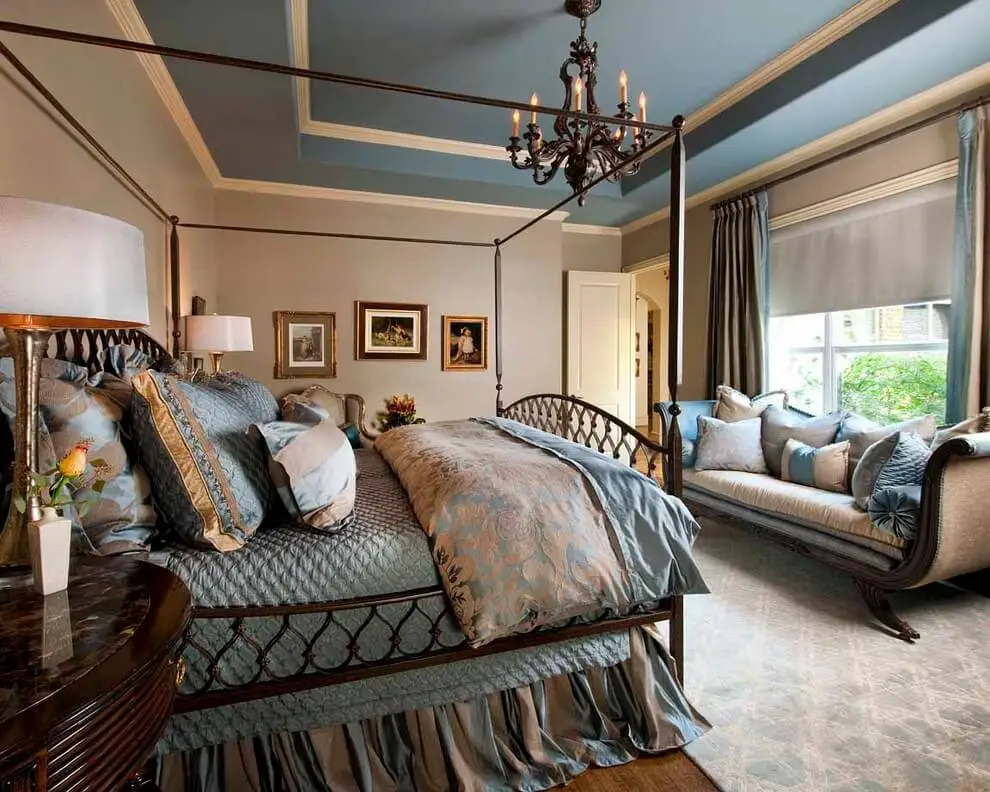
When it comes to pairing colors for home decor, blue and beige are an underrated yet effective combination. The soothing quality of blue can introduce a sense of serenity to the space, while beige’s neutral tone provides a versatile backdrop that effortlessly complements a range of hues. By incorporating blue and beige into your next design project, you’ll be able to create a harmonious atmosphere that exudes sophistication and calmness.
Don’t be afraid to experiment with this unlikely duo – it may just become your new favorite color combination!
Brown and Beige.
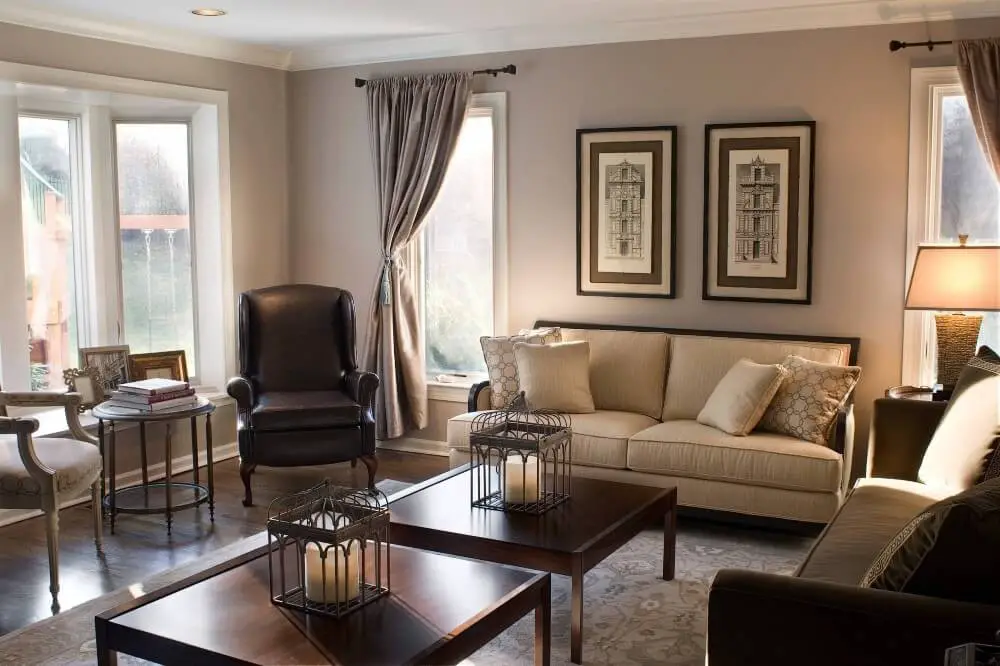
When combining brown and beige, two harmonious colors that evoke distinct moods, it’s crucial to strike a balance between warmth and calmness. Brown, with its rich, earthy tone, can conjure a cozy ambiance, while beige’s soft, creamy hue can create a serene atmosphere. To avoid overwhelming the senses, use these colors thoughtfully in home decor. Excessive brown can render a space dark and uninspiring, whereas an overabundance of beige can result in a room feeling flat and uninviting.
A clever way to incorporate both colors is by employing brown as an accent color. Consider using it in accessories like pillows, throws, or rugs to add warmth without sacrificing brightness. Beige, on the other hand, can be effectively used as an accent color in areas where relaxation is paramount, such as the bedroom or bathroom.
Burgundy and Beige.
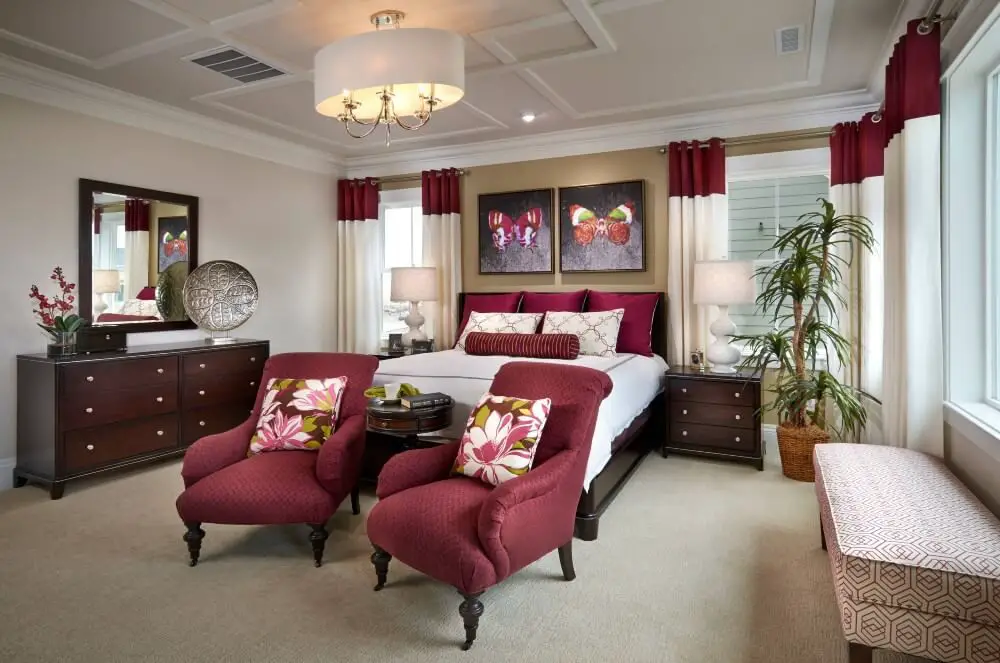
When paired together, burgundy and beige form a harmonious union that can elevate the ambiance of any room. The deep, rich tones of burgundy bring an air of sophistication, while the light, neutral quality of beige provides a serene backdrop. This dynamic duo creates a warm, welcoming atmosphere that is ideally suited for any home, making it perfect for creating a cozy retreat or lively gathering space.
Caramel and Beige.
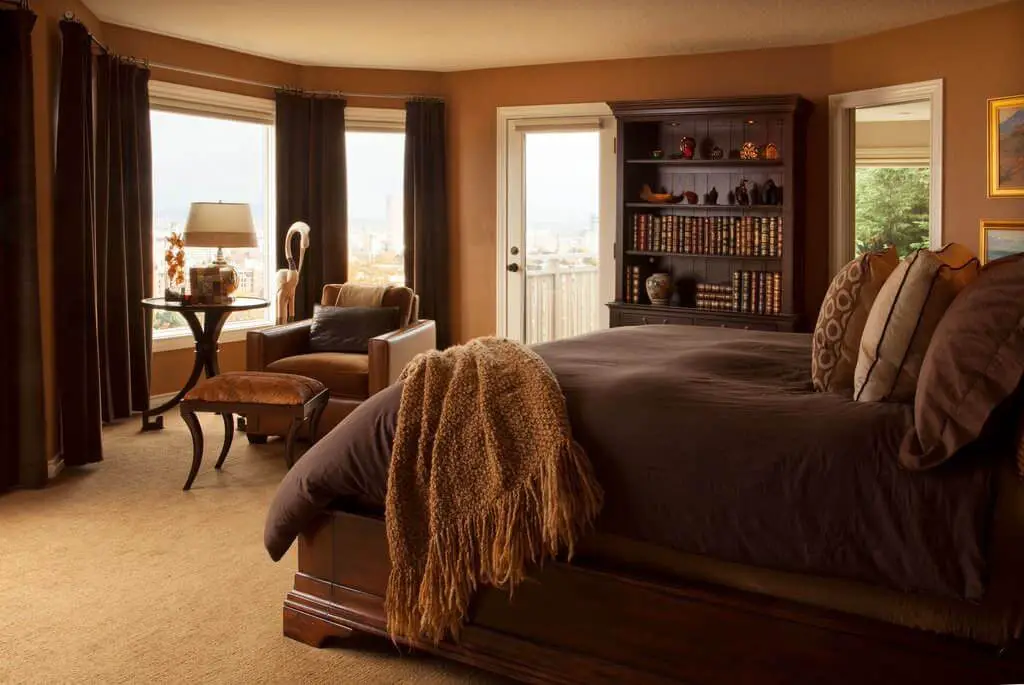
While beige and caramel may not be the most vibrant colors, they can combine to create a cozy and welcoming ambiance when used effectively. Beige’s light tan hue makes it an ideal choice for dominating a room’s design, or serving as a subtle accent color that evokes feelings of serenity. When paired with caramel, its warm brown tones add depth and visual interest, making it an excellent combination for creating a sense of warmth and comfort in your home.
Charcoal and Beige.
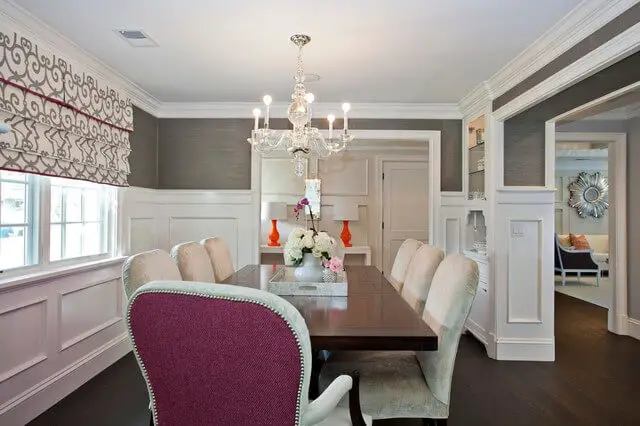
When it comes to incorporating charcoal into an otherwise beige-dominated space, there’s a certain je ne sais quoi that can elevate the entire room. One effective approach is to utilize charcoal as an accent color against a beige backdrop. This contrast creates visual interest and injects a sense of dynamism into the space. To take this concept a step further, consider incorporating beige furniture with pops of charcoal in the form of throw pillows or blankets.
The resulting texture and visual appeal will be nothing short of captivating. Alternatively, you could define the space with a charcoal-trimmed beige rug, which serves to ground the area while introducing an element of sophistication. And let’s not overlook the role that artwork can play in this equation – carefully chosen pieces can tie together the various design elements at work here and imbue the space with a certain charm.
Cranberry and Beige.
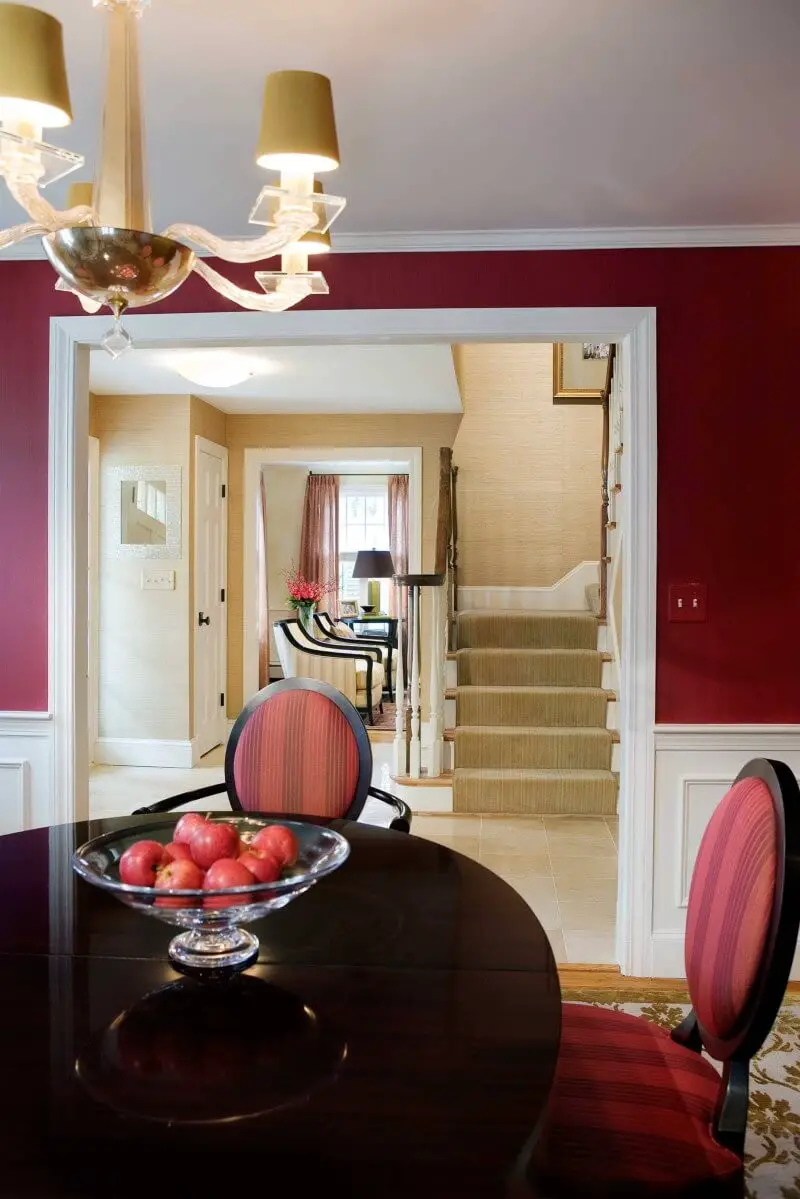
When it comes to creating a warm and inviting atmosphere in your home, the combination of cranberry and beige is often overlooked but incredibly effective. The rich, deep red tone of cranberry with its subtle purple undertones pairs beautifully with the soft, golden hues of beige. By incorporating these colors into your decor through accessories, artwork, or even furniture pieces like a statement sofa or chair, you can add depth and visual interest to a room.
The key is finding a balance that complements each color without overwhelming the senses. Too much of either shade can create a cluttered or chaotic feel, so it’s essential to take your time and thoughtfully choose how to incorporate these colors into your design scheme.
Dusty blue and Beige.
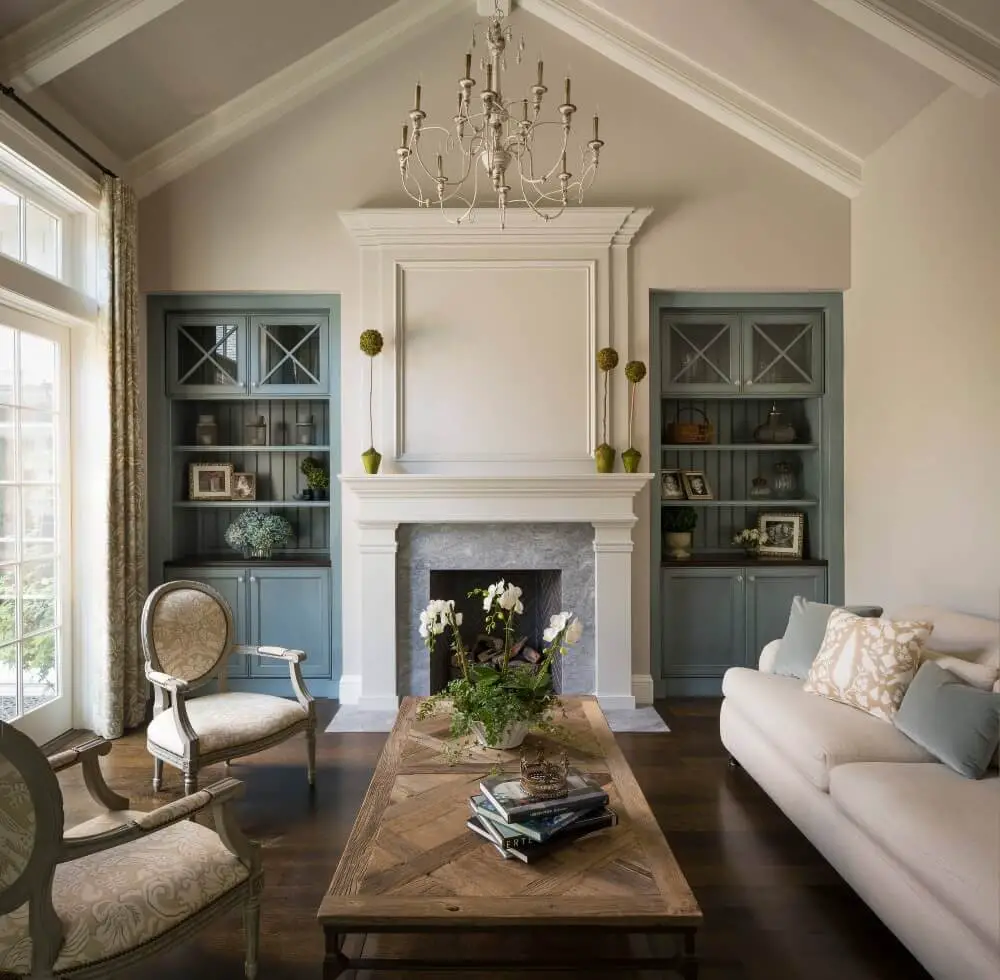
When it comes to harmonious home decor, the combination of dusty blue and beige is an excellent choice. The soothing quality of dusty blue creates a calming atmosphere, while beige’s versatility allows for effortless pairing with various design elements. By incorporating these colors into your space, you can achieve a unified look that exudes serenity and sophistication.
Emerald and Beige.
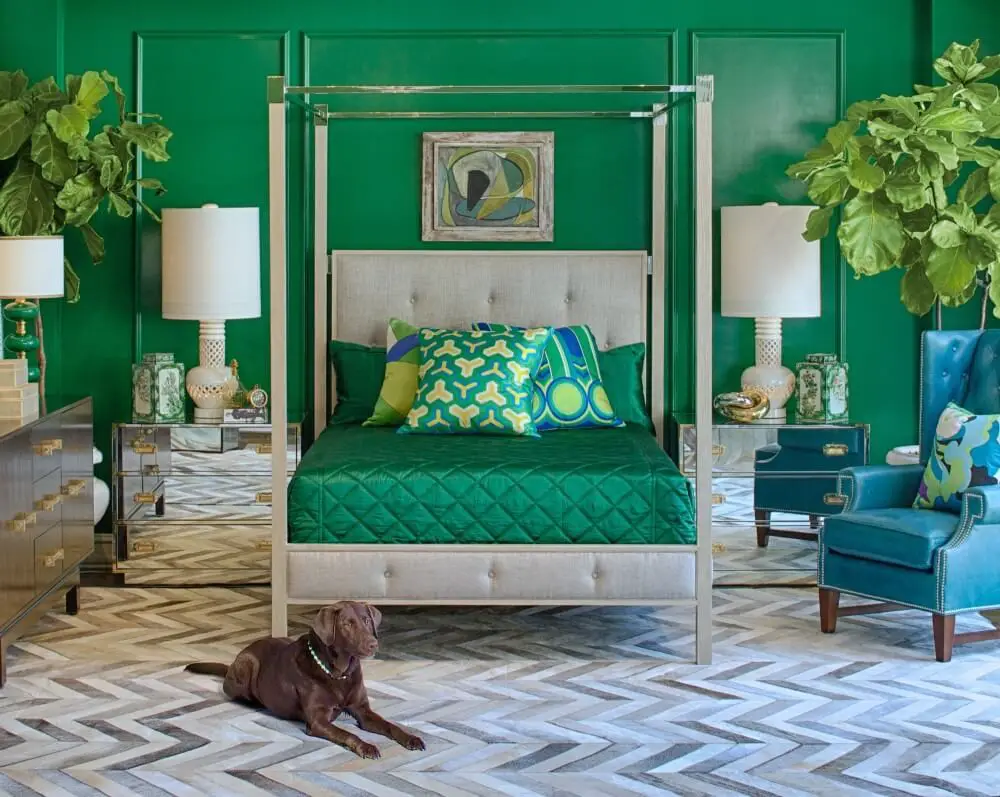
When it comes to home decor, emerald is a stunning color that can add depth and sophistication to any space. This rich, vibrant hue can be used as an accent or as the primary color scheme, depending on your personal style. Beige, on the other hand, is a warm and neutral color that complements many other hues. When paired with emerald, these two colors create a harmonious and elegant combination that exudes classic sophistication while still feeling modern and fresh.
Whether you’re looking to revamp your living room, bedroom or any other space in your home, the pairing of emerald and beige is an excellent choice. This color scheme is versatile enough to allow for endless creativity and can be tailored to suit your unique taste and decor style.
Gold and Beige.
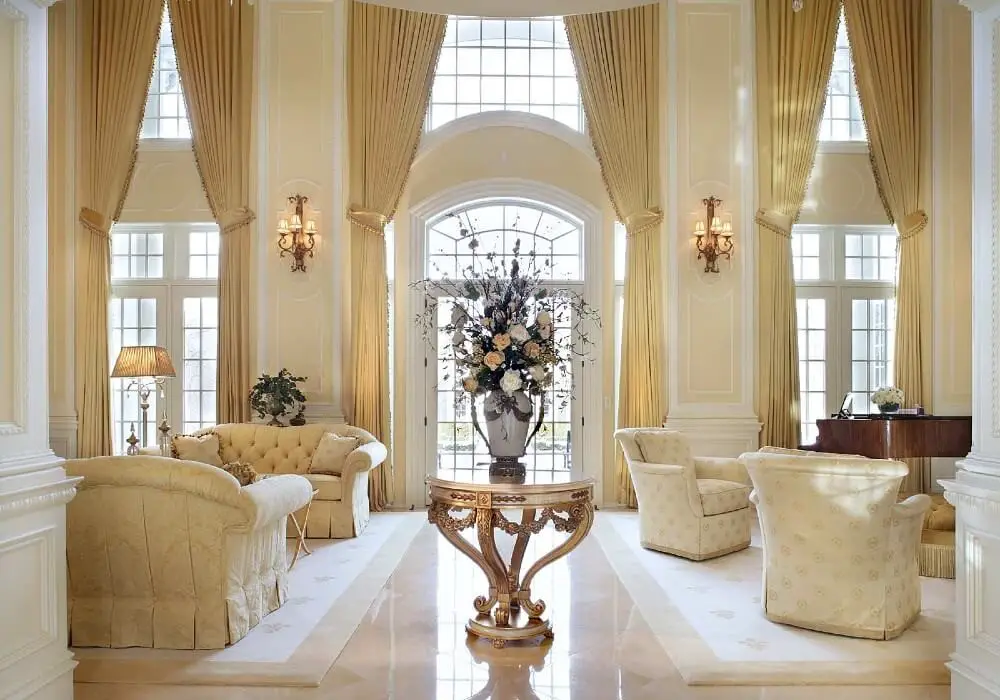
Gold, with its warm and inviting tone, harmonizes beautifully with the earthy neutrality of beige. This versatile combination offers endless possibilities for incorporating gold as an accent color or even as the primary hue in your home decor scheme. Beige, meanwhile, serves as a calming influence, effortlessly pairing with a wide range of colors to cultivate a serene and soothing ambiance within your space.
Gray and Beige.
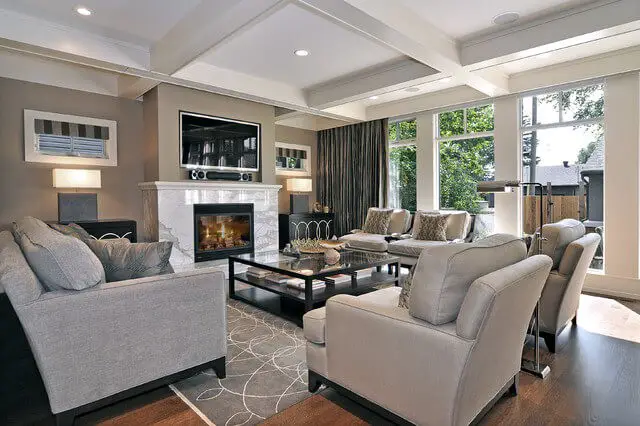
While some may be skeptical about combining gray and beige, I firmly believe that when done correctly, this color combination can result in a sophisticated and refined atmosphere within your home. The key lies in selecting the perfect shades of these colors and ensuring they harmonize with the surrounding hues. For instance, if you’re working with a predominantly light-colored space, consider using a richer, deeper beige tone to add depth and dimension.
Conversely, if your room is dominated by darker tones, a lighter gray shade can help create a sense of balance and visual interest.
Green and Beige.
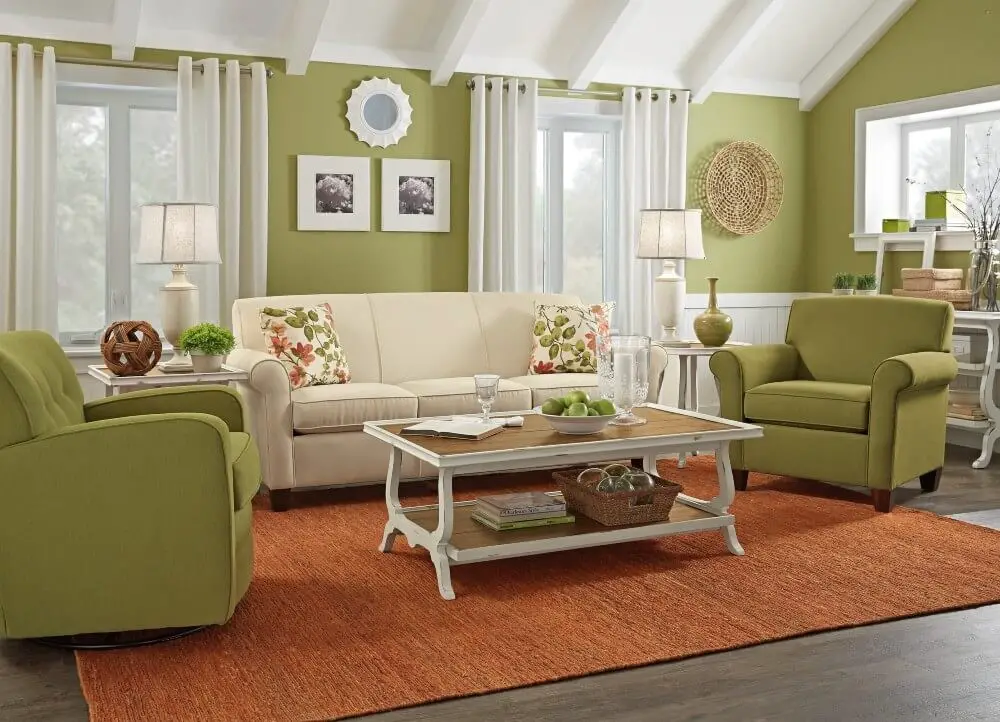
Green’s versatility is one of its most appealing aspects when it comes to home decor. The various shades of green available allow you to create a calming ambiance or inject energy into a space, depending on the desired mood. Beige, too, is a chameleon-like color that effortlessly complements many other hues. When paired with green, these two colors come together to produce a soothing and sophisticated atmosphere in your home.
If you’re seeking a color scheme that exudes warmth and invites relaxation, consider combining green and beige. This harmonious duo can help create a cozy retreat in any room, making it an excellent choice for bedrooms or living spaces.
Light Blue and Beige.
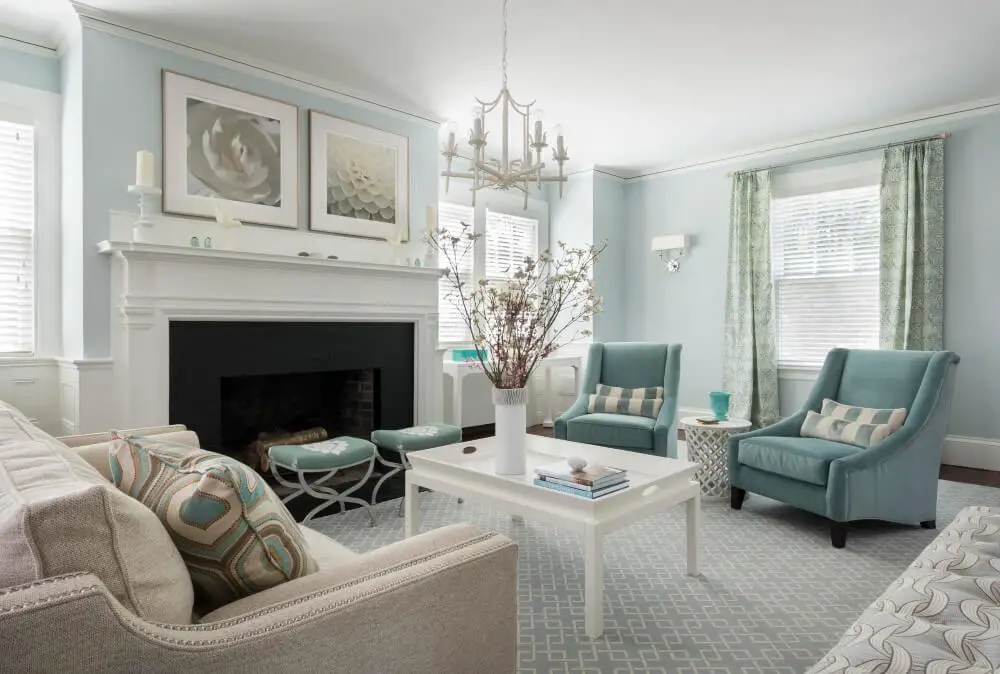
When it comes to home decor, certain colors can have a profound impact on the ambiance of our living spaces. Light blue, for instance, is renowned for its calming and relaxing properties, making it an ideal choice for promoting serenity within our homes. Meanwhile, beige remains a perennial favorite due to its versatility and ability to harmonize seamlessly with a wide range of hues.
For those seeking to create a cozy and inviting atmosphere, combining light blue with beige, green with beige, or brown with beige can be particularly effective. By introducing these colors in thoughtful ways, we can craft spaces that feel warm, welcoming, and perfectly suited to our individual tastes.
Light Pink and Beige.
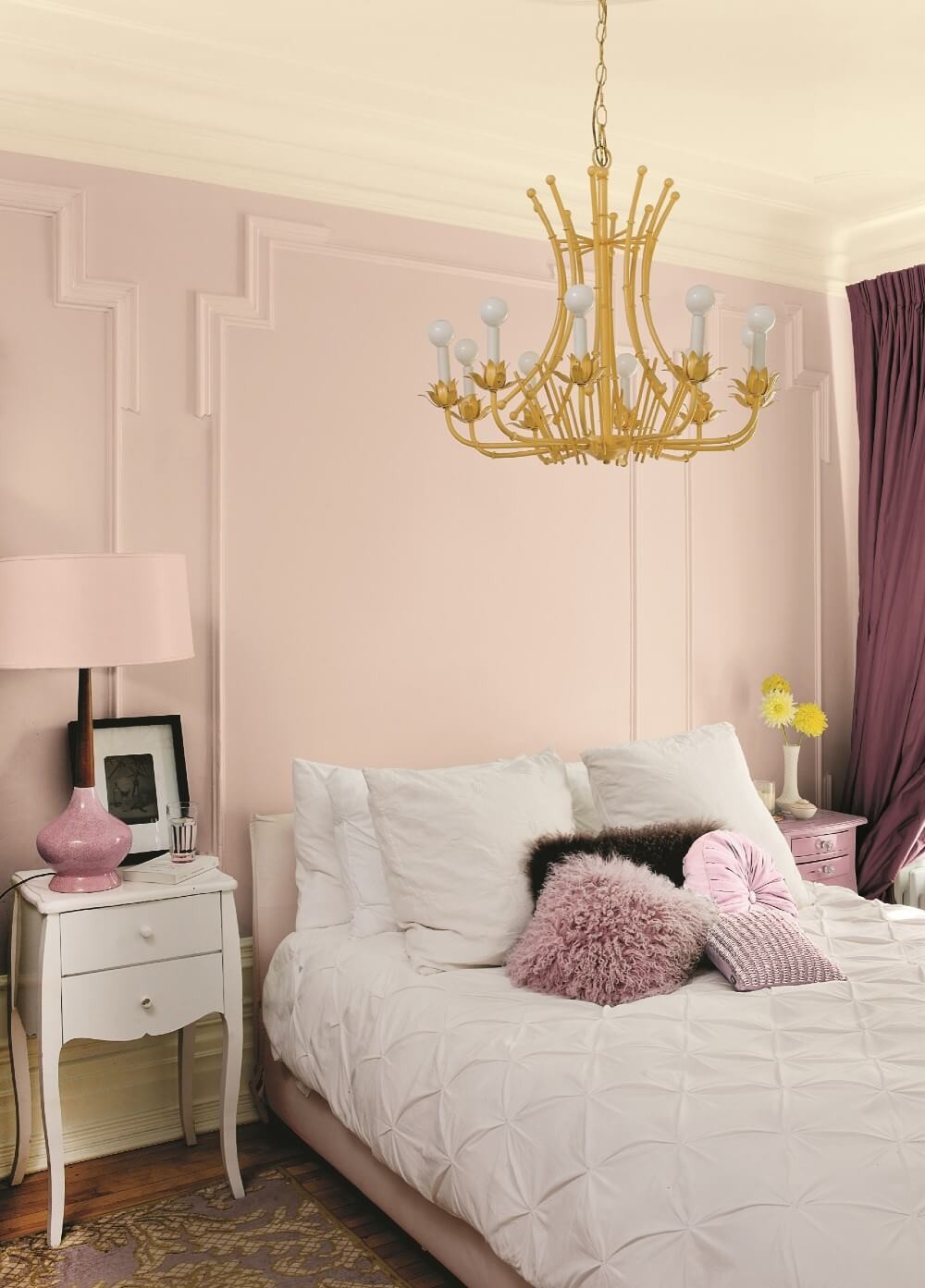
When it comes to home decor, combining colors that complement each other can create a harmonious and inviting atmosphere. Light pink and beige are an excellent example of a color combination that works well together. This pairing can be used to achieve a neutral look in a room or add a touch of elegance without overwhelming the space. One of the best things about light pink and beige is their versatility.
They can be incorporated into various design styles, from modern to traditional, making them a great starting point if you’re unsure what style your home embodies. This color combination also offers the flexibility to adapt to different moods and personalities. If you’re looking for inspiration on how to use light pink and beige in your home, consider the following ideas. You can start by incorporating these colors as accent hues through pillows, curtains, or rugs.
Alternatively, you can use them in your paint color choice to add a subtle pop of color without overwhelming the room. Additionally, think about combining light pink and beige in your furniture selection. For instance, pair a beige couch with light pink throw pillows or opt for a light pink dresser that complements beige walls.
Lime and Beige.
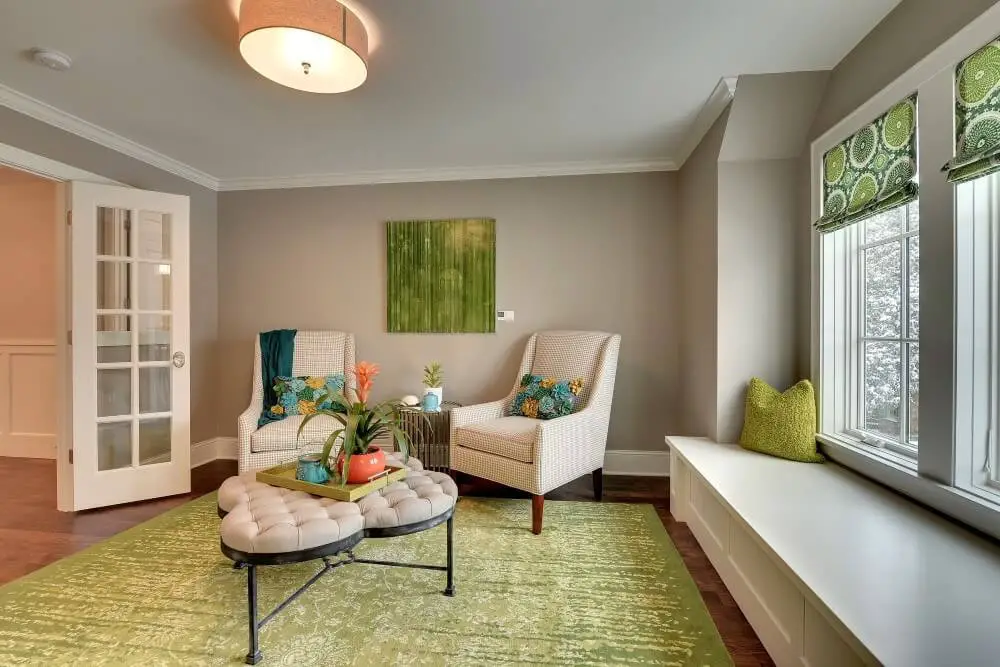
While many people overlook the combination of lime and beige, it can be truly stunning when executed well. The vibrant hue of lime can add a burst of energy and brightness to a room with neutral beige walls. To incorporate this color combination into your design, consider adding pops of lime through accessories such as curtains, throw blankets, or even artwork. This subtle yet striking contrast can elevate the overall aesthetic of the space.
Mahogany and Beige.
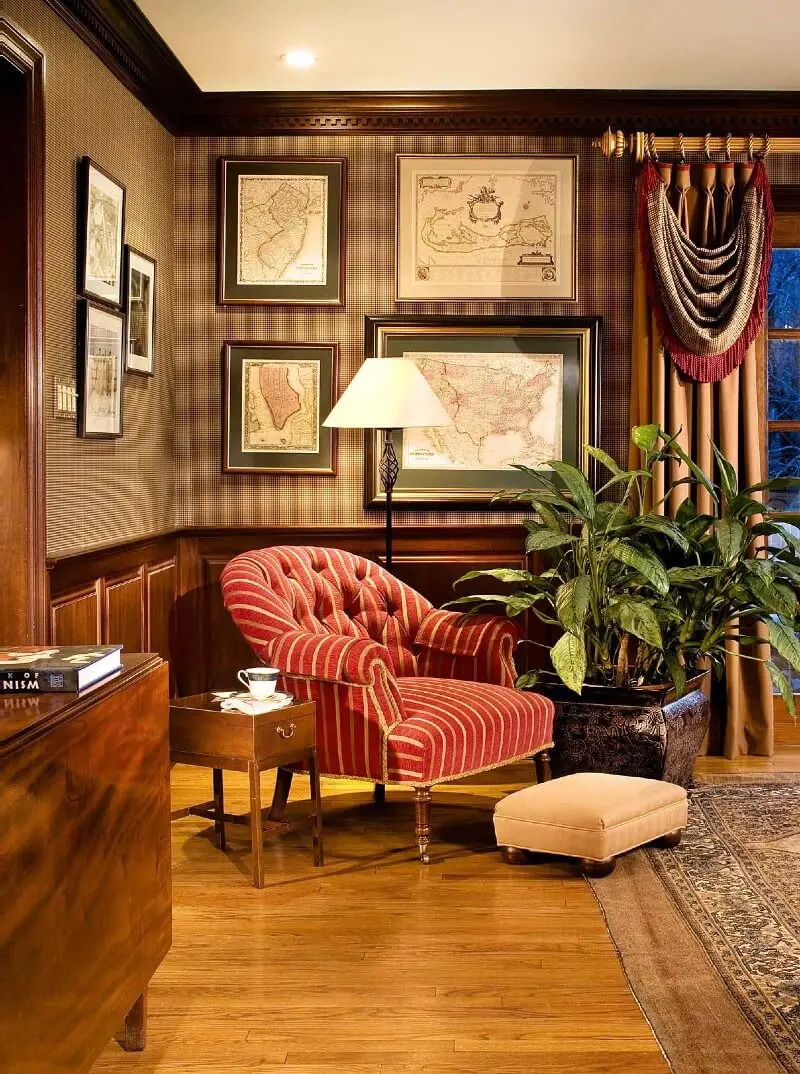
Combining mahogany’s deep, rich tone with beige’s warm and inviting essence creates a harmonious visual balance that can elevate the ambiance of any room. Whether used as an accent or primary color, this pairing has the potential to craft a stunningly sophisticated aesthetic in your home décor.
Mauve and Beige.
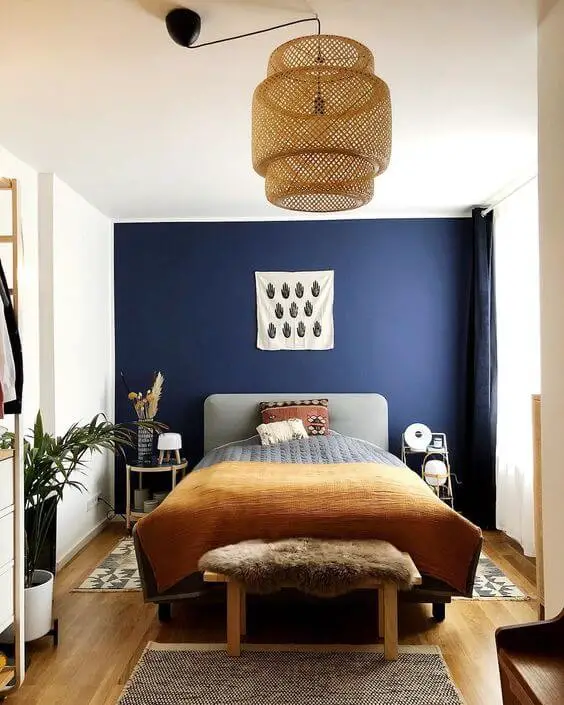
When it comes to pairing colors that complement each other, few combinations can rival the harmonious union of mauve and beige. This duet of warm-toned hues – mauve’s soft purple undertones and beige’s gentle brown notes – has a way of simultaneously brightening up a space while evoking a sense of coziness. Whether you’re looking to revamp your walls or simply inject some vibrancy into your decor, the combination of mauve and beige is an excellent choice.
Mint and Beige.
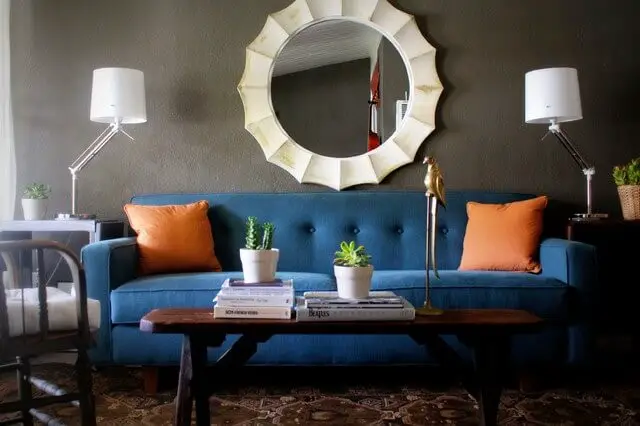
Mint green is often overlooked when it comes to designing spaces, but it’s surprisingly effective when used thoughtfully. As an accent wall or incorporated in small doses, mint green can add a touch of serenity and calmness. When paired with beige, the combination creates a soothing ambiance that promotes relaxation.
Monochrome and Beige.
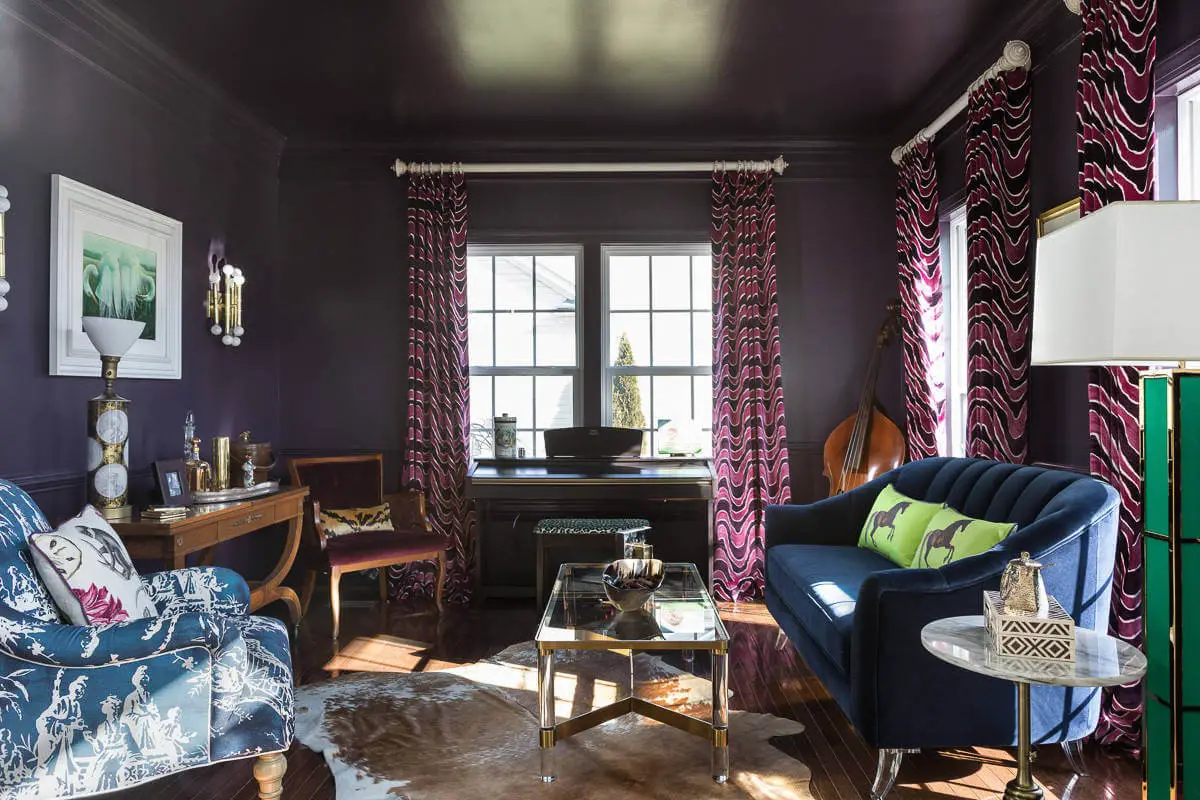
When considering home decor options, the harmonious pairing of beige and monochrome colors is an excellent choice. By incorporating various shades of these neutral hues, you can achieve a simple yet sophisticated aesthetic that exudes elegance. Beige, in particular, can bring warmth to a room dominated by monochrome tones, creating a cozy atmosphere. One of the most significant advantages of combining beige and monochrome is their ability to create an illusion of greater space.
As these colors are neither bold nor overpowering, they won’t compete with other design elements for attention. This makes them an ideal choice for small rooms, where visual clutter can exacerbate the sense of confinement. By employing this color combination, you can effectively expand the perceived size of your room and create a more airy feel.
Mustard Yellow and Beige.
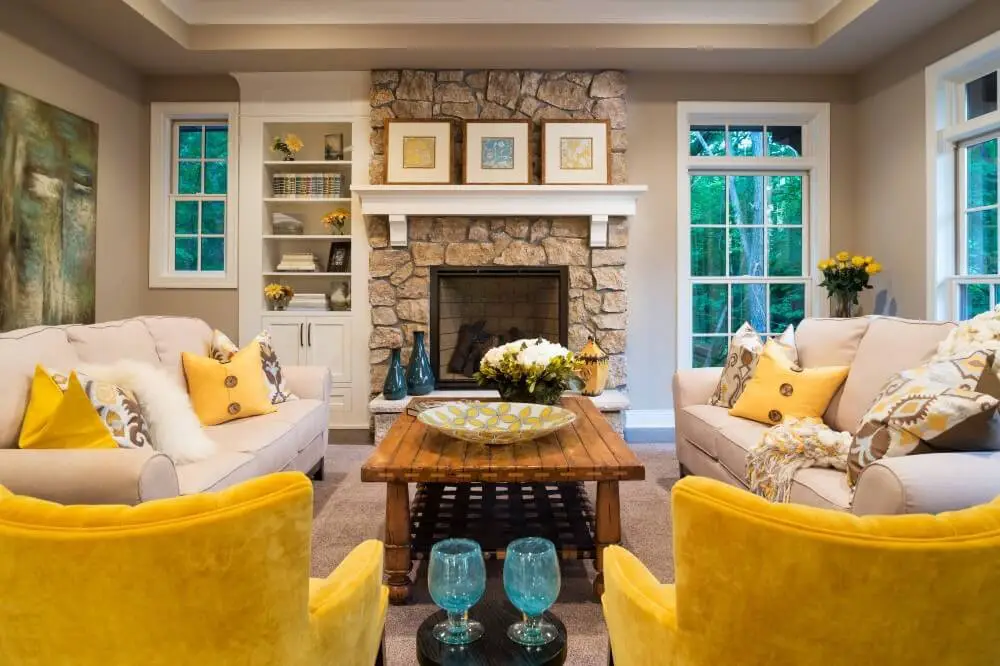
Combining mustard yellow and beige creates a harmonious balance that exudes warmth and coziness. To add a pop of brightness, incorporate mustard yellow as an accent color against beige walls or furnishings. Conversely, use beige as an accent shade to bring warmth to mustard yellow surfaces. This colour combination is sure to infuse your home with a snug and inviting ambiance.
Navy Blue and Beige.
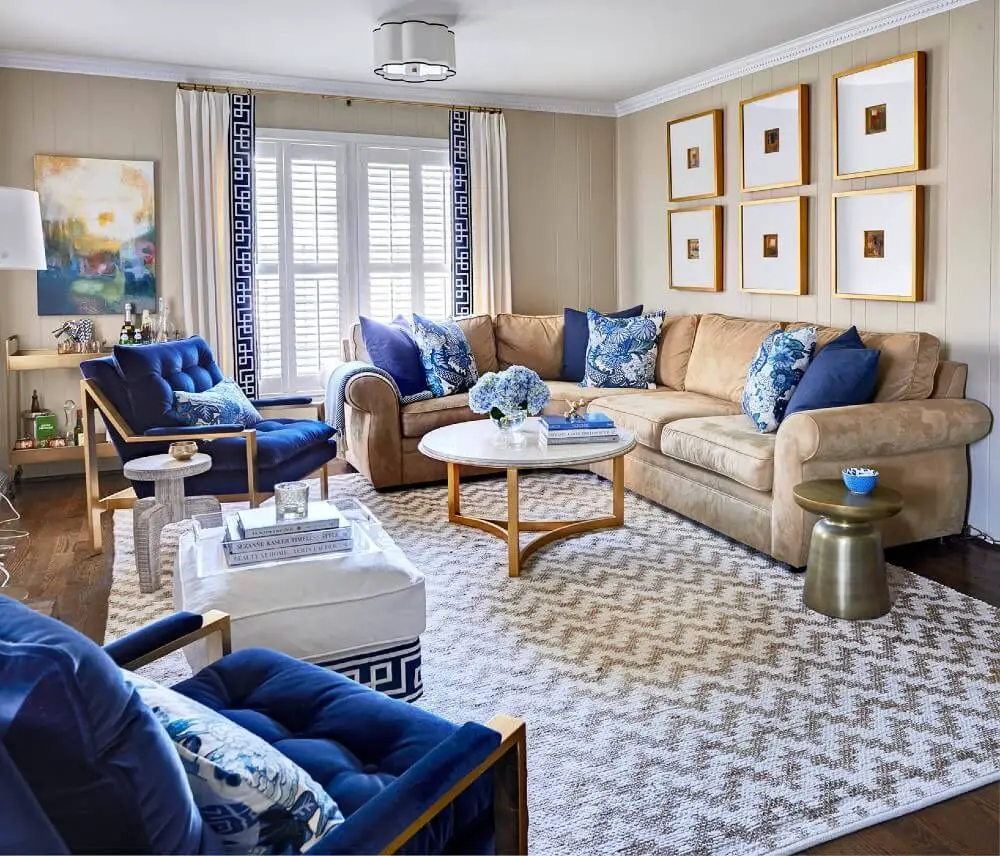
Navy blue’s adaptability makes it an excellent choice for home décor. It can seamlessly transition from accent colour to dominant hue, effortlessly elevating the ambiance of any space. Similarly, beige’s versatility allows it to harmonize with an array of colours, rendering it a popular pick for interior design. When these two colours converge, they produce a refined and sophisticated aesthetic that effortlessly transforms a room into a haven of serenity.
Olive Green and Beige.
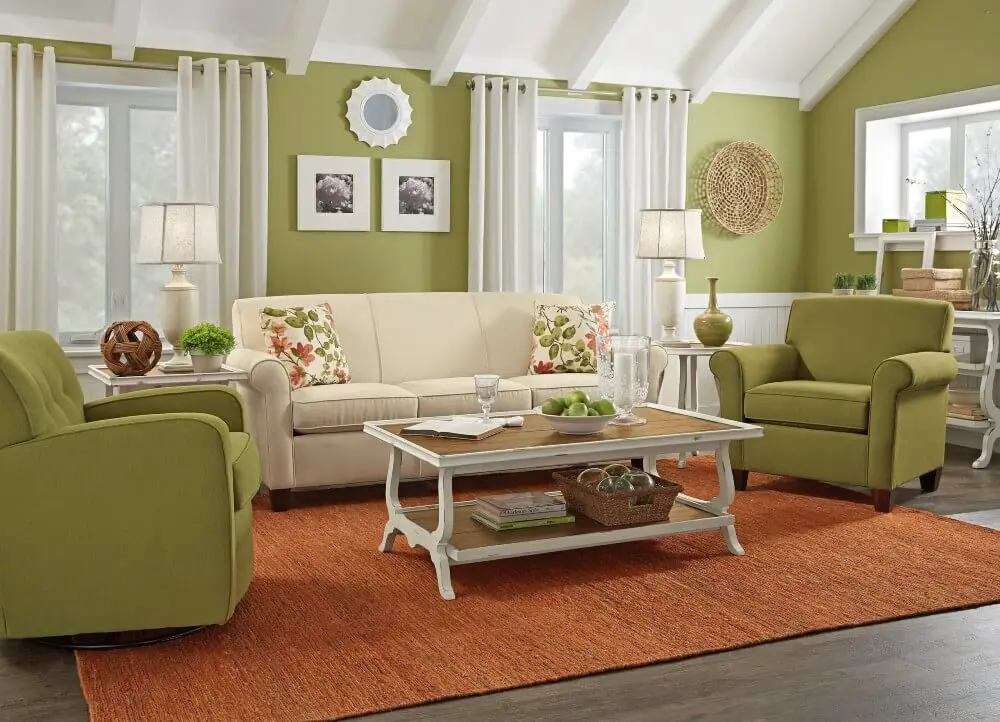
When it comes to home decor, two colors that may seem like polar opposites can actually work harmoniously together. Olive green and beige are a great example of this. While olive green can add a pop of excitement and depth to a room without overwhelming the senses, beige provides a neutral foundation that allows the green to truly shine. This color combination is perfect for adding visual interest to a space without being too overpowering.
By pairing these two colors, you can create a balanced and inviting atmosphere that’s both calming and stimulating.
Orange and Beige.
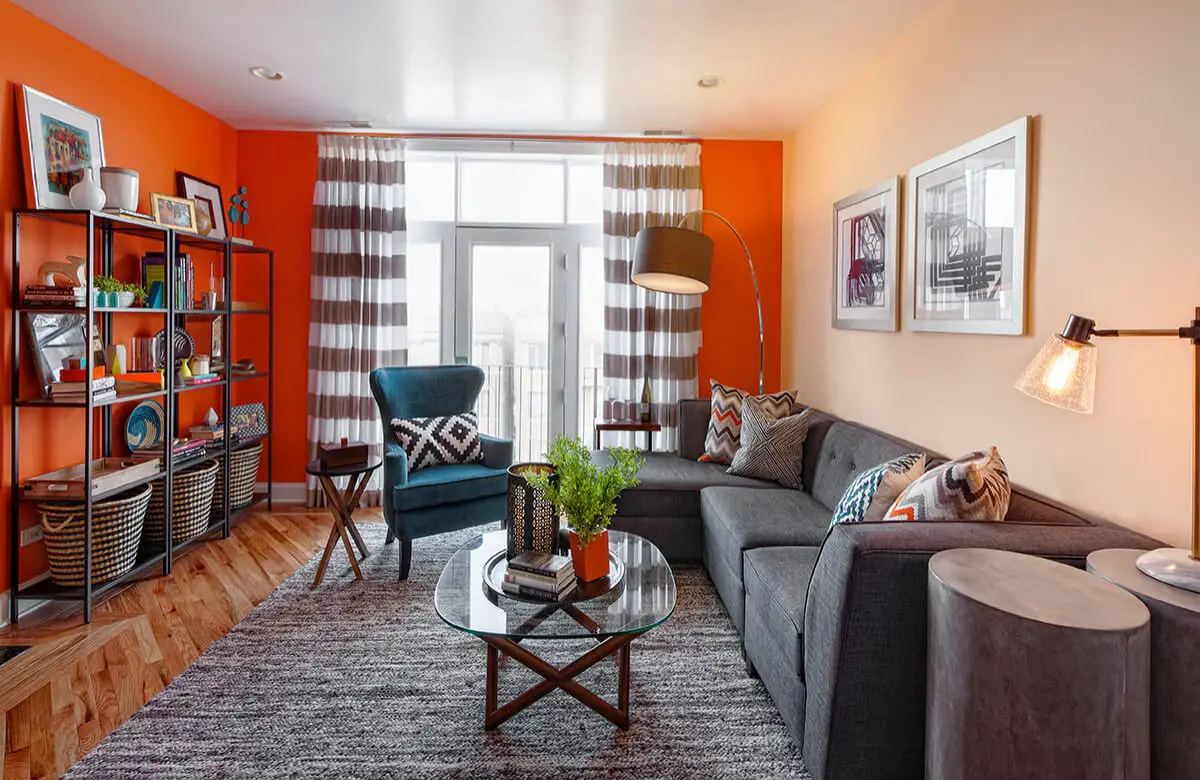
When it comes to home decor, finding the right color combination can be a challenge. However, pairing orange with beige can result in a stunning and harmonious space. Orange, being a vibrant and happy color, adds a burst of energy to any room, making it perfect for creating a lively atmosphere. On the other hand, beige is a warm and neutral color that brings a sense of coziness and comfort. When these two colors are combined, they create a unique balance that promotes relaxation and serenity.
The resulting space is not only visually appealing but also inviting and calming, making it an ideal choice for home decor.
Peach and Beige.
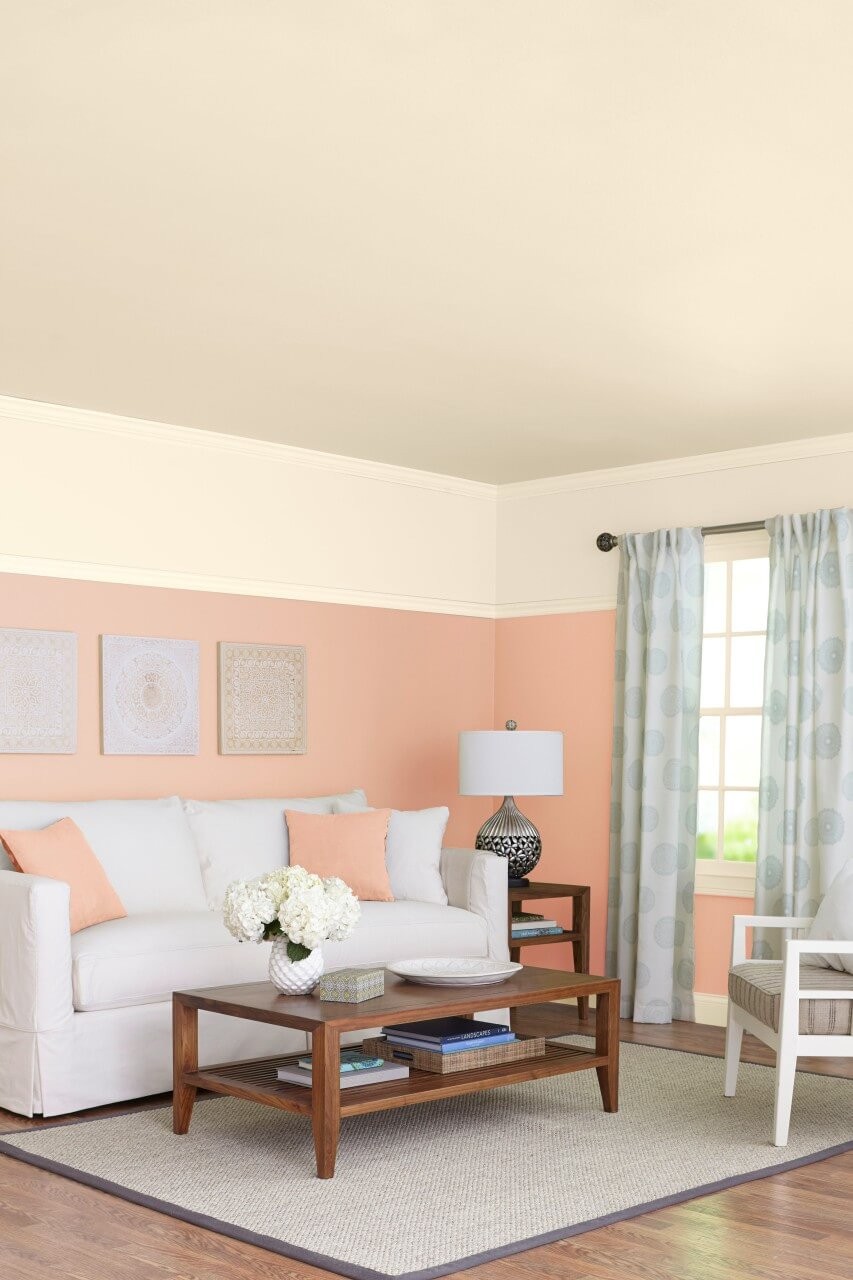
When it comes to incorporating peach and beige into your home decor, the key is finding ways to balance their warm, inviting tones. One approach is to use peach as an accent wall, while painting the surrounding areas beige. This creates a cozy atmosphere that’s perfect for relaxing. Alternatively, you could incorporate both colors into your furniture, accessories, and even bedding.
For those who want to add some personality to their space without going overboard, this color combination offers a great starting point.
Pink and Beige.
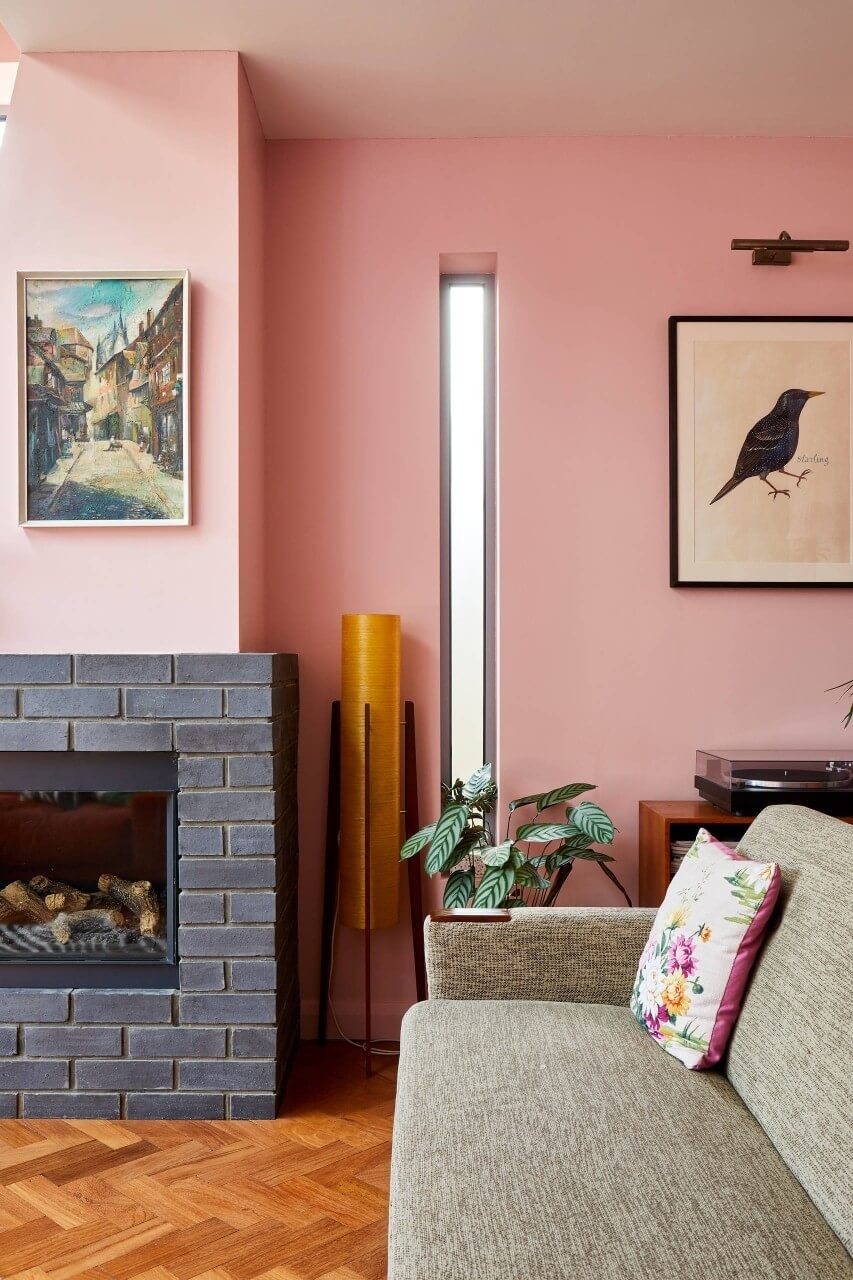
A timeless color palette that transcends trends. This classic combination of beige and pink has been a staple for generations, offering a versatility that makes it suitable for a wide range of styles. If you’re unsure about how to bring these hues together, consider the following ideas: Pair pink as an accent color with beige dominant spaces, adding a touch of femininity and whimsy.
Alternatively, use beige as the primary color and inject pops of pink through accessories or furniture, creating a subtle yet stylish atmosphere. For a more subdued look, combine beige with pale neutrals like gray or blue. Finally, introduce a splash of boldness by incorporating vibrant colors like orange or yellow into your design.
Purple and Beige.
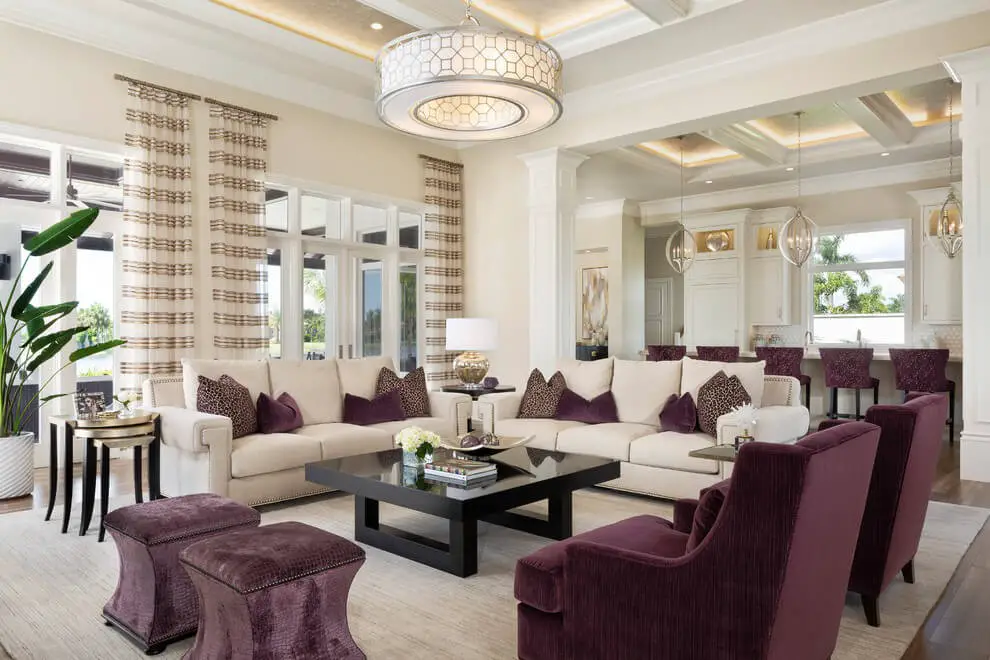
When it comes to choosing color schemes for home decor, one of the most popular and harmonious combinations is the pairing of deep, rich purples with warm, earthy beiges. These two hues can be used as bold accent pieces or as the foundation for a room’s overall aesthetic. If you’re looking for inspiration on how to effectively combine these colors, consider the following ideas.
One approach is to create a striking focal point by painting one wall a deep, regal purple and another in a soothing beige tone. This subtle yet effective contrast adds visual interest without overwhelming the senses. Alternatively, you can incorporate these colors into your furniture and accessories for a more understated yet cohesive look.
For instance, imagine a coffee table painted a rich, jewel-toned purple set against beige walls, or a plush area rug in a deep plum hue complementing neutral beige tones. The possibilities are endless when it comes to combining these two colors, making them an excellent choice for anyone looking to add some depth and sophistication to their home.
Red and Beige.
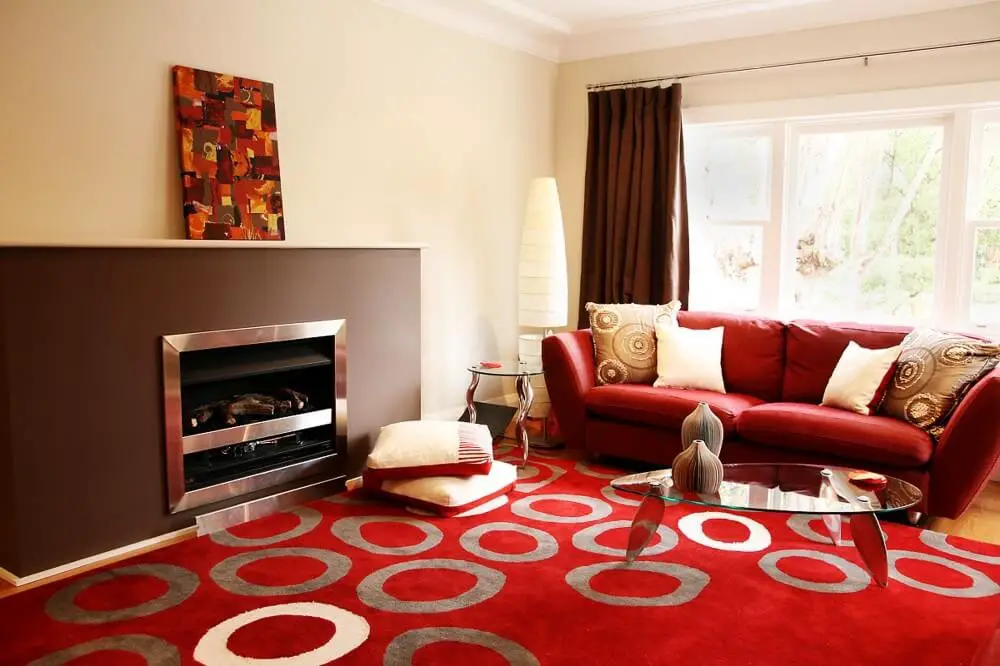
The harmonious combination of red and beige is a staple in home decor, but what makes this pairing so effective? One key factor is the shared warmth of these two hues. Red, with its passionate connotations, pairs perfectly with the calming essence of beige. This union creates a snug and welcoming ambiance that draws you in. Another reason for their synergy is the fact that both red and beige are neutral colors, which means they won’t compete with other colors in your space.
Instead, they’ll work together to brighten up a room that may be feeling a bit dim, while also providing a sense of balance and stability.
Robin’s Egg and Beige.
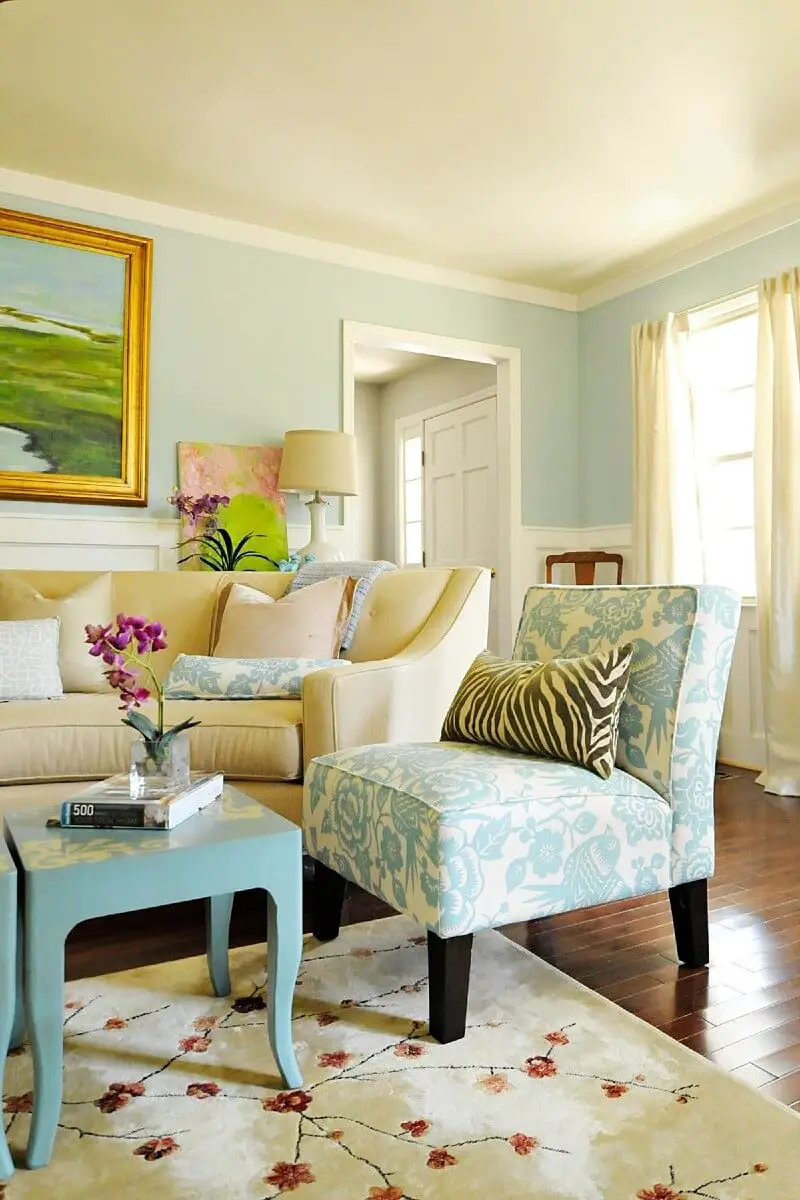
In the realm of home decor, beige provides a versatile backdrop for a wide range of colors. Among the most harmonious pairings are various shades of blue and green. A prime example is robin’s egg blue, which offers a light, airy quality that beautifully complements creamy beige tones.
Sage and Beige.
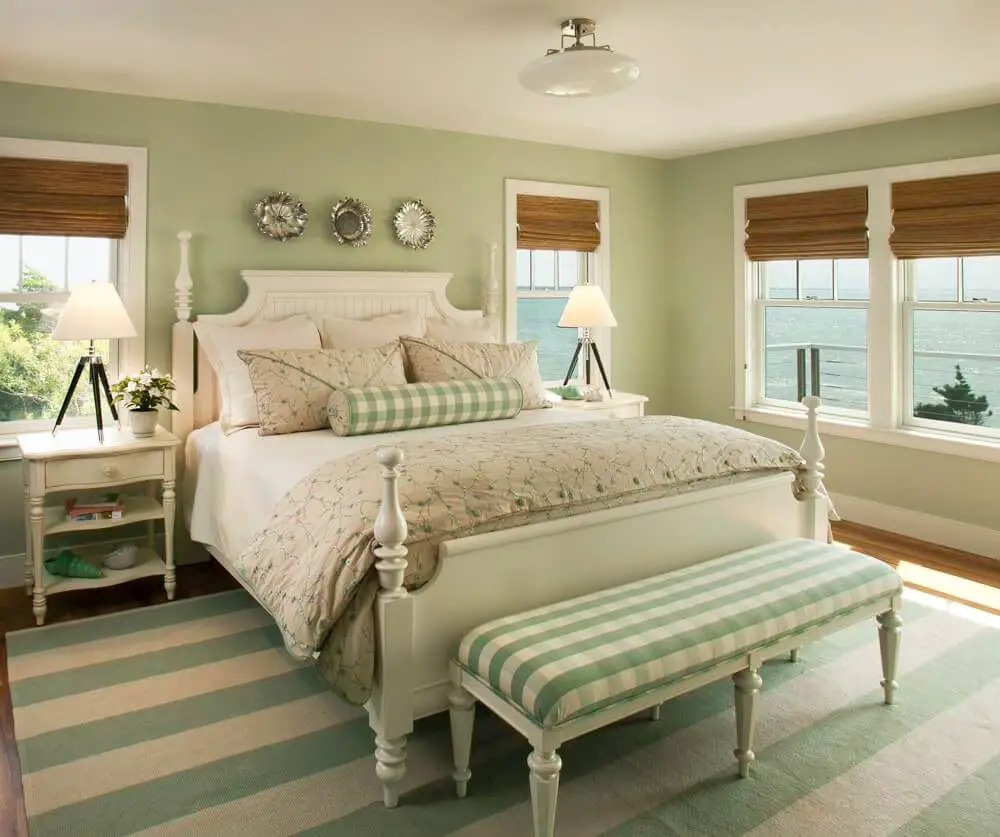
When it comes to home decor, selecting the right color combination can make all the difference. One harmonious pairing that’s gaining popularity is sage green paired with beige. The earthy tone of the sage green brings the outdoors in, while the warm and calming beige tones create a cozy atmosphere. This color combination is particularly well-suited for living rooms or bedrooms, as it promotes relaxation and serenity.
Teal and Beige.
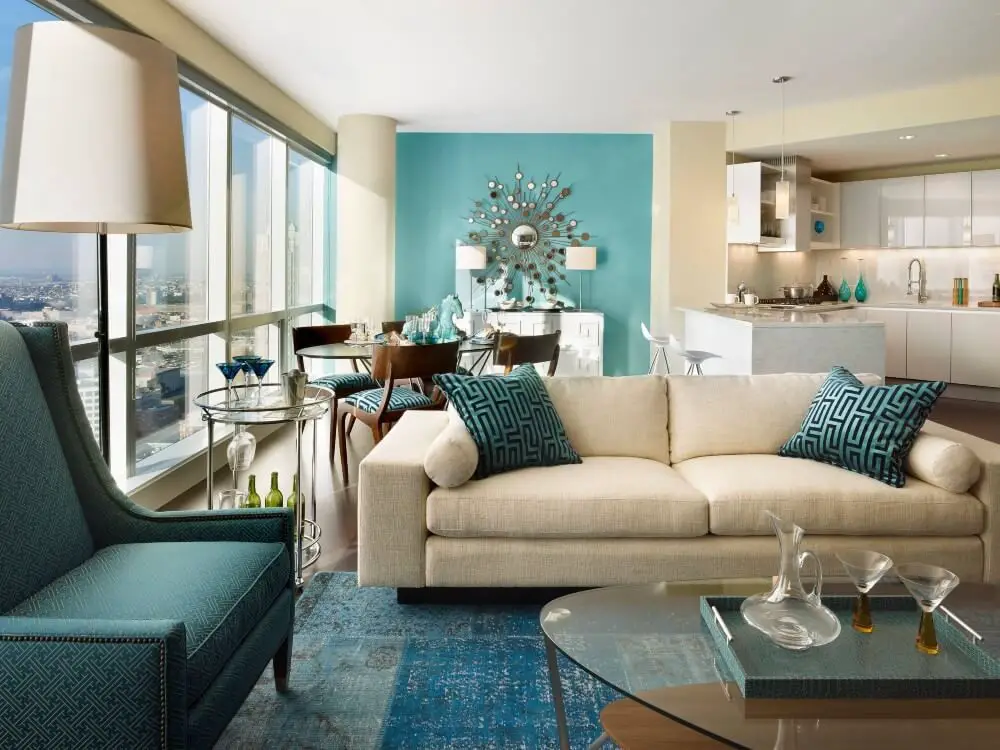
When it comes to creating a harmonious and sophisticated atmosphere in your home, the combination of teal and beige is an excellent choice. Teal’s vibrant tone can be used as an accent color to add depth and visual interest, while beige provides a neutral background that effortlessly complements its bold counterpart. This color palette is incredibly versatile, allowing you to achieve a stylish and elegant look in any room – whether it’s your living room, bedroom, or bathroom.
By incorporating teal and beige into your home decor, you can create a beautiful and inviting space that exudes refinement and sophistication.
Turquoise and Beige.
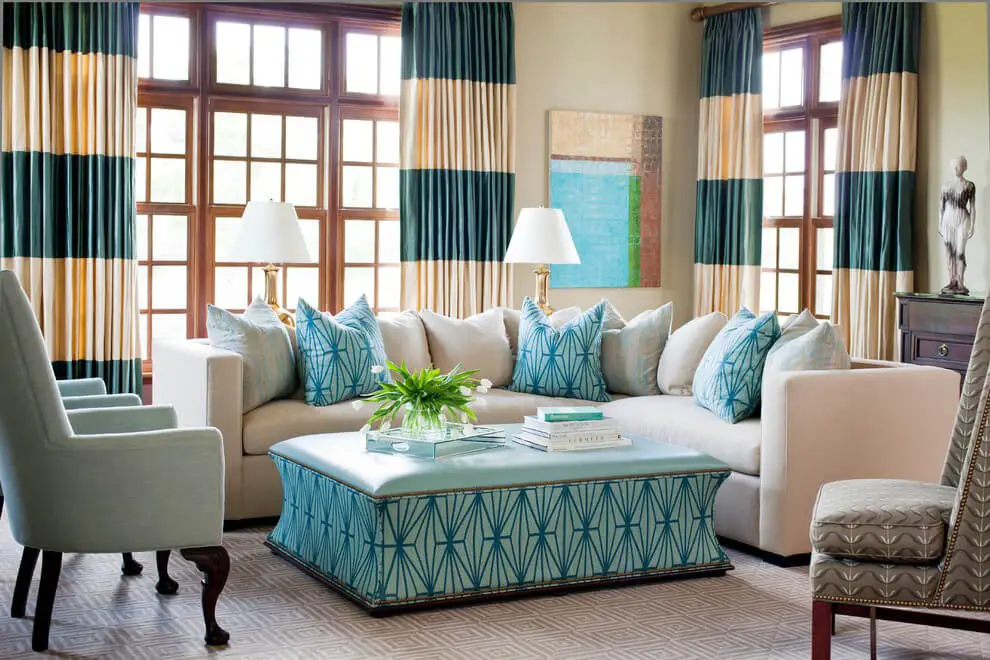
Combining turquoise and beige creates a harmonious contrast that can elevate the aesthetic of any room. The cool, calming tone of turquoise is reminiscent of the ocean, while the warm, earthy quality of beige evokes a sense of naturalness. This color combination can be effectively used in home decor through accessories like throw pillows or area rugs, as well as by painting walls or incorporating these colors into furniture pieces such as a statement sofa or armchair.
White and Beige.
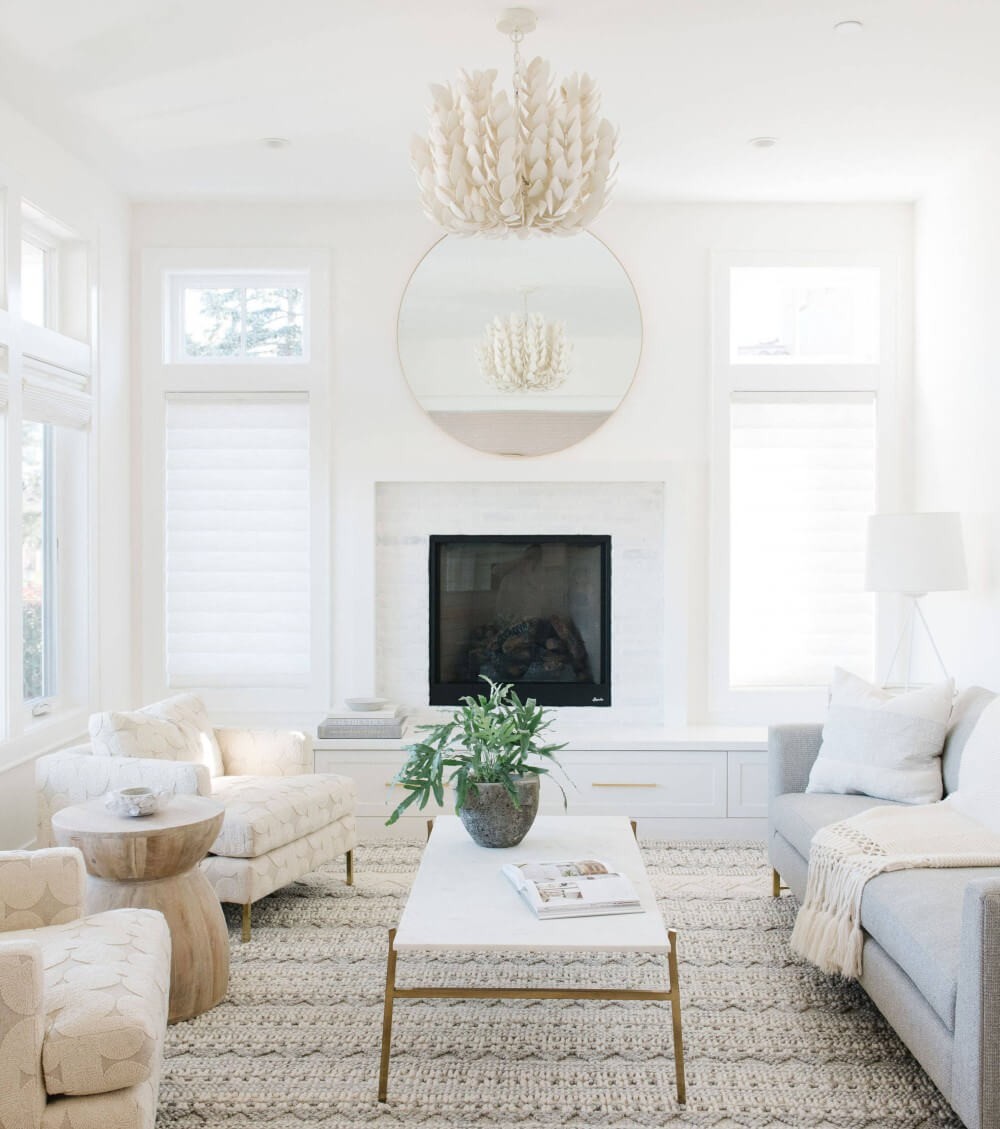
When it comes to creating a calming and inviting atmosphere in your home, the combination of white and beige is an excellent choice. These versatile colors can be used in various ways to achieve a sophisticated look that promotes relaxation. You can opt for a bold accent wall featuring white or incorporate beige as the primary color scheme. The key to making this color combination work is finding the right balance between the two hues.
With their harmonious blend, you can trust that your home will exude a sense of serenity and refinement.
Yellow and Beige.
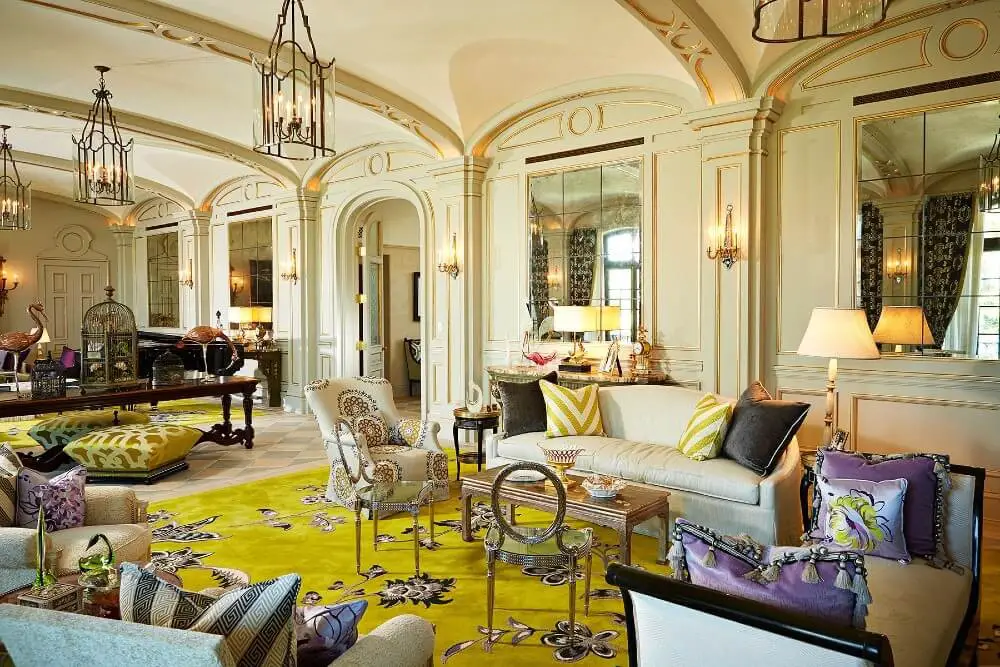
A harmonious union of beige and yellow creates a warm and inviting atmosphere that can be effortlessly incorporated into various aspects of your home. One ideal location to bring these colors together is the living room. By painting the walls a soothing beige and incorporating pops of yellow through accessories or furniture, you’ll cultivate a cozy retreat perfect for unwinding with family and friends. The kitchen is another excellent space to combine these colors.
Beige can be used as the primary hue or as an accent color against a white or black background, while yellow can add a splash of vibrancy as an accent color against beige or black, or take center stage as an all-over color.
FAQs
Is beige and cream the same color?
While the distinction between beige and cream might seem trivial to some, I firmly believe they possess distinct characteristics. Beige tends to embody a soft, light brown hue, whereas cream leans towards a pale yellow tone. Although there is some overlap in their shades, the nuances become apparent when examining specific color variations.
In my view, beige exudes a more understated quality, while cream is slightly more attention-grabbing.
This disparity can be leveraged to great effect when utilizing one of these colors as an accent in your home. Beige can bring a sense of warmth to a space, whereas cream injects a touch of brightness.
What color is similar to beige?
While the answer to what’s similar to beige can be subjective, some might argue that tan or khaki share similarities with this neutral hue. However, if you’re looking for an alternative that still exudes subtlety but with a hint of warmth, brown could be the way to go. Like beige, brown is a muted color, yet it possesses a slightly richer undertone that adds depth and personality.
If you’re seeking a shade that’s reminiscent of beige but with a bit more flair, exploring different shades of brown might just be the answer.
Are there different shades of beige?
While many people think that beige is a one-dimensional color, it’s actually a versatile hue with many nuances. The answer to whether beige looks different depending on the lighting and surrounding colors is a resounding yes. Sandstone, for instance, has a warm, creamy quality that makes it suitable for a wide range of settings. Other popular beige shades include linen, ecru, and bone, each with its own unique characteristics.
However, what’s truly fascinating is how these shades can appear to change depending on their surroundings. A light beige might get lost in a room filled with dark colors, but the same shade could take on a new dimension when paired with lighter neutrals.
What color number is beige?
While the debate surrounding beige’s classification may be ongoing, it’s undeniable that this versatile shade occupies a unique position in the world of colors. From a color wheel perspective, beige sits comfortably at the midpoint between the twelve primary hues – red, orange, yellow, green, blue, indigo, and violet. Its appearance can be described as a soft brown or pale yellow, lending itself to its dual nature as both a color and a shade.
Interestingly, beige’s versatility extends beyond its theoretical classification. It can be created through various mixtures of paint, with the most straightforward approach involving the combination of white and black paints. This blend produces a light beige hue, while combining yellow and brown paints yields a darker iteration. Notably, regardless of the base color used, beige always retains its characteristic lightness.
Is beige a neutral color?
While some argue that beige tilts towards the warm spectrum, others consider it a genuine neutral. Regardless of which perspective resonates with you, there’s no disputing beige’s versatility in various settings. Its ability to add warmth without overwhelming makes it an attractive choice for those seeking balance. However, it’s crucial to use beige judiciously, as excess can lead to a space feeling uninspired and uninviting.
Is beige warm or cool?
Beige’s versatility allows it to seamlessly blend with both warm and cool color schemes, making it a popular choice for interior design. When paired with cool colors, beige can take on a calming quality, while its presence among warm hues can imbue a space with cozy warmth. The key is understanding that beige’s tone can shift depending on the surrounding colors, allowing designers to carefully curate a look that suits their desired aesthetic.
How do you decorate with beige color?
Beige is a highly versatile color that can be seamlessly integrated into various home decor styles. Its calming and soothing essence makes it an excellent choice for creating a serene atmosphere in one’s living space. Furthermore, beige can be employed to add a touch of opulence, making it a popular preference among those seeking to elevate their interior design.
For those unsure about incorporating beige into their decorating scheme, there are several ways to effectively utilize this versatile color. Firstly, painting the walls with a soothing beige hue creates a neutral backdrop that allows other colors and patterns to take center stage. Alternatively, introducing beige furniture or accessories can bring warmth and coziness to a room. Beige can also be used as an accent color to add visual interest and depth to one’s decor.
Finally, combining beige with other colors can lead to a unique and stylish aesthetic that reflects the homeowner’s personal taste.
Conclusion
When selecting colors to pair with beige in home decor, it’s essential to consider several factors. First, think about the specific shade of beige you’re using – different hues have distinct personalities that can be complemented or contrasted by various colors. Additionally, consider the room itself; some colors may thrive in a particular space but not elsewhere. Finally, contemplate the mood you want to create: do you aim for relaxation and calmness, or something more vibrant?
Once these variables are considered, start brainstorming color combinations that will harmonize with beige. Several colors can be paired effectively with beige, including pale blues and greens, soft yellows and oranges, pastel pinks and purples, as well as neutral shades like black, white, and gray. Each of these options can evoke a distinct atmosphere in a room, so take your time to select the one that best suits your needs.
With these colors in mind, you’ll be able to create a beautiful and cohesive home decor scheme tailored to your unique style.

